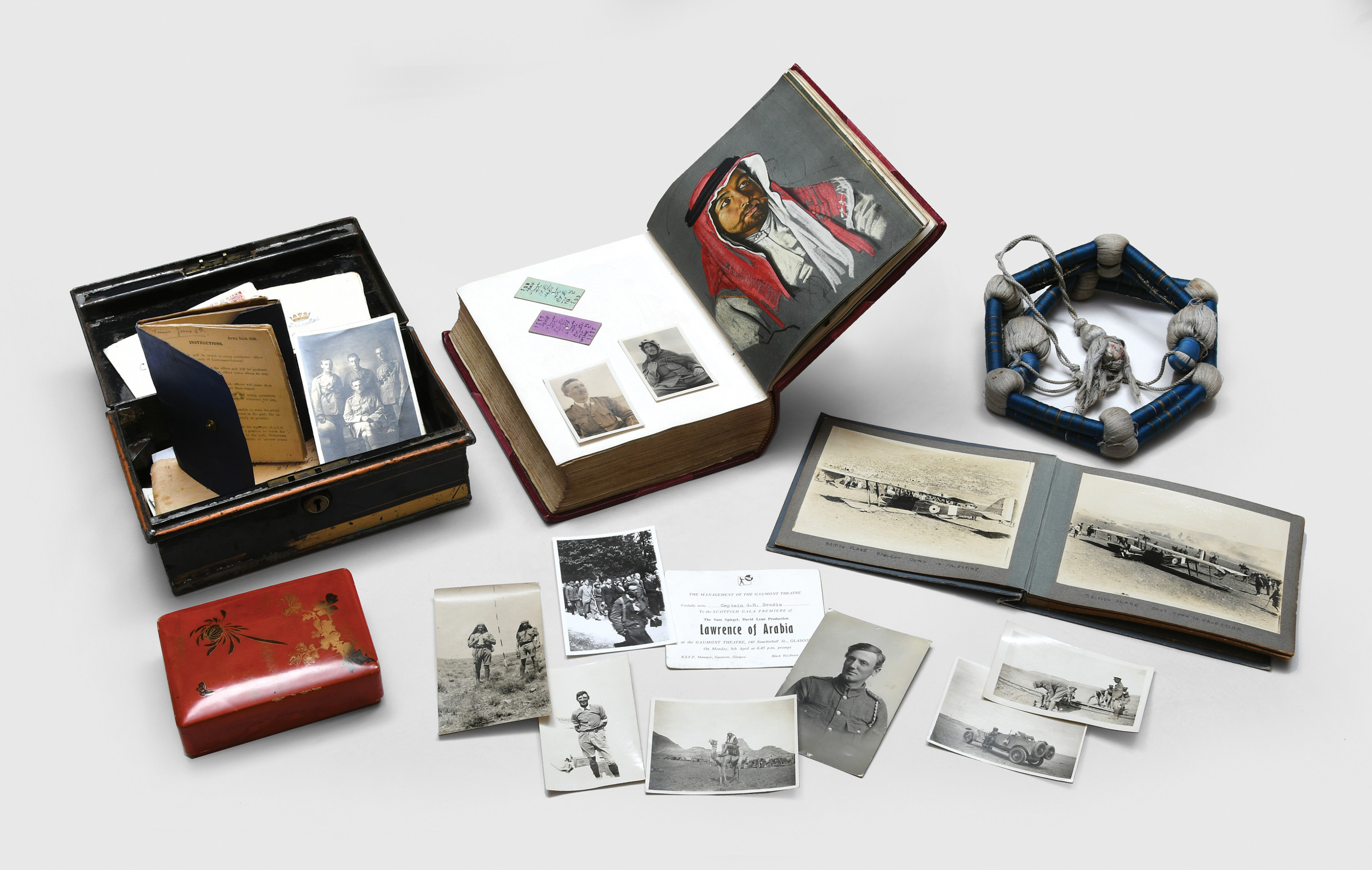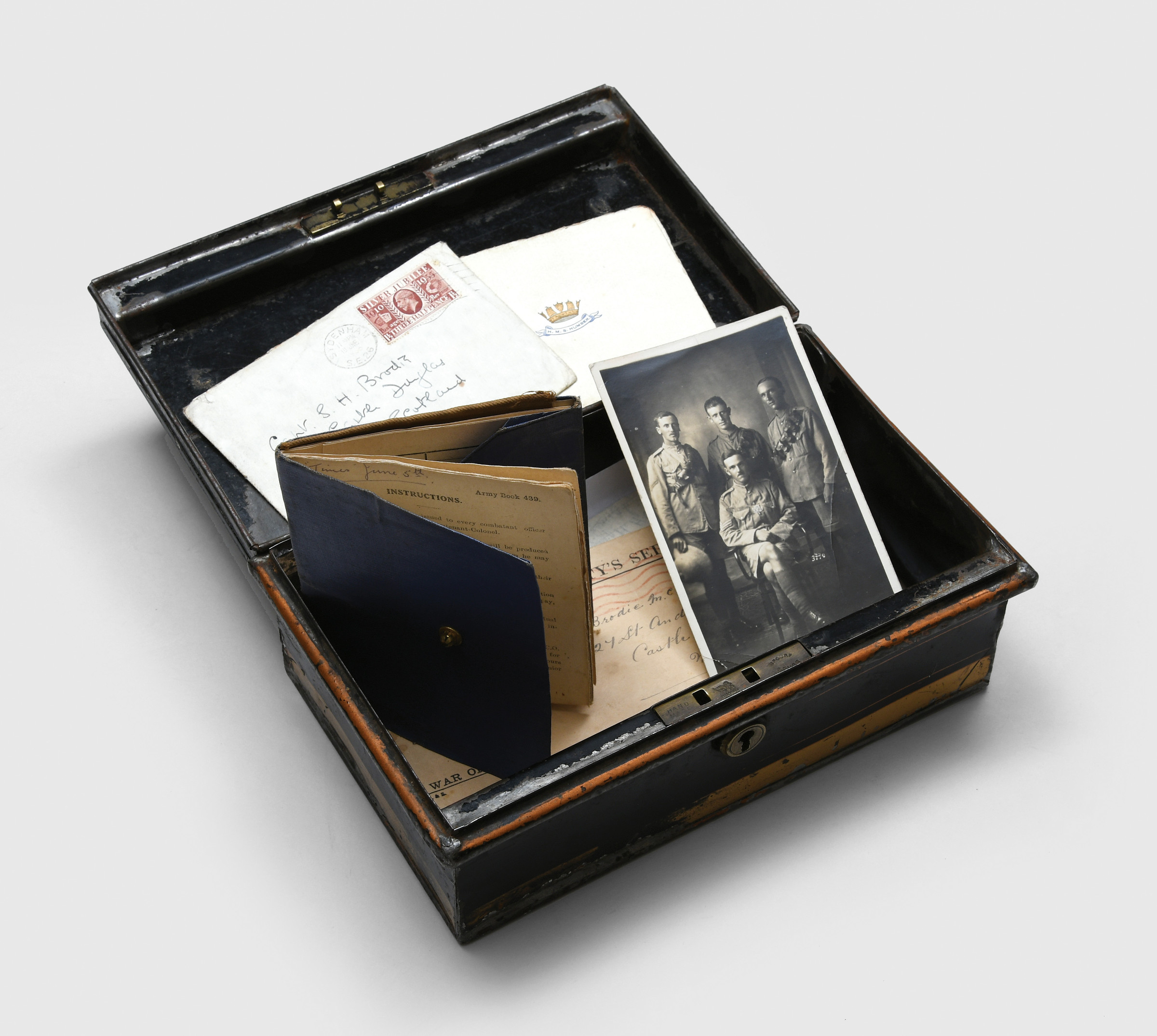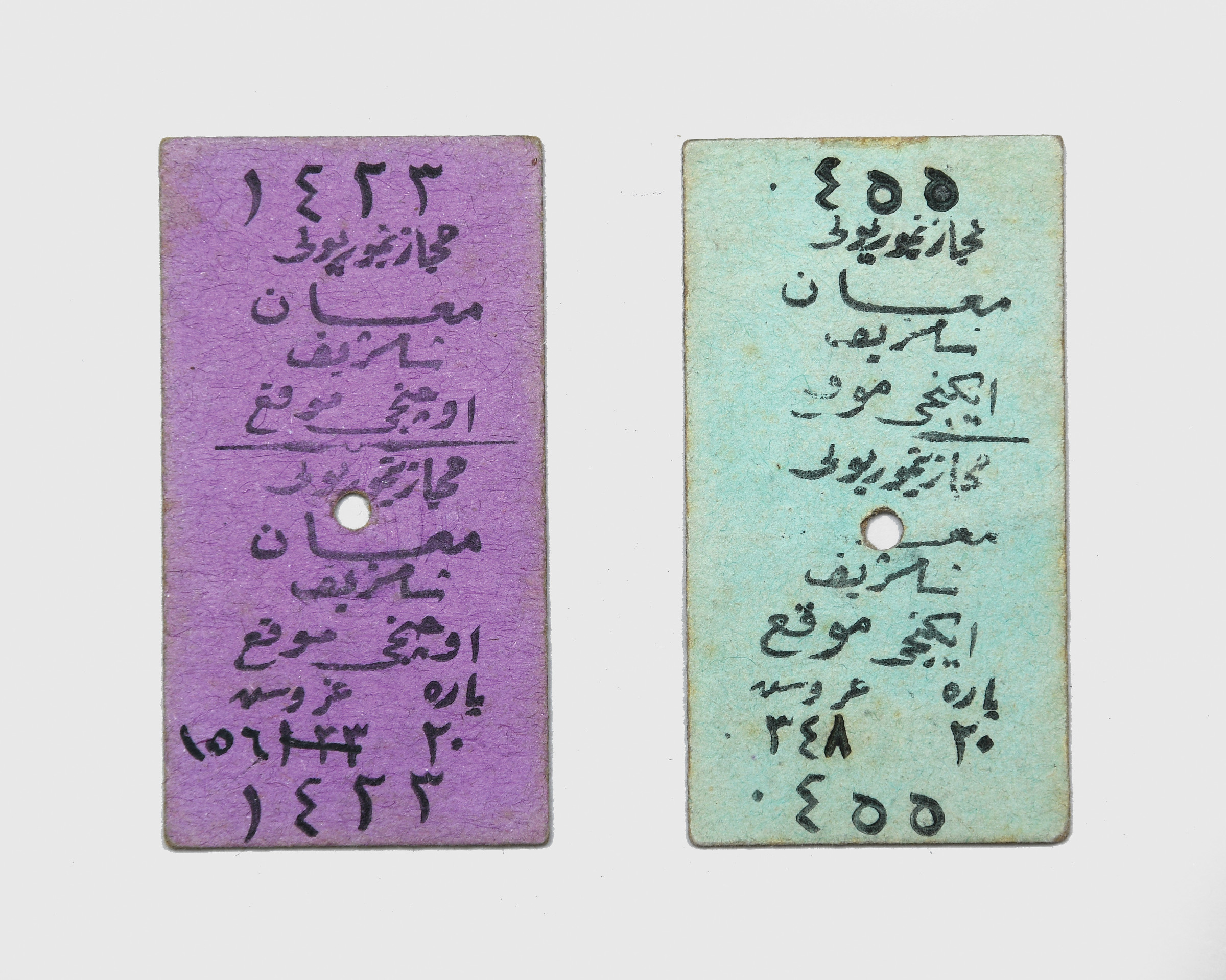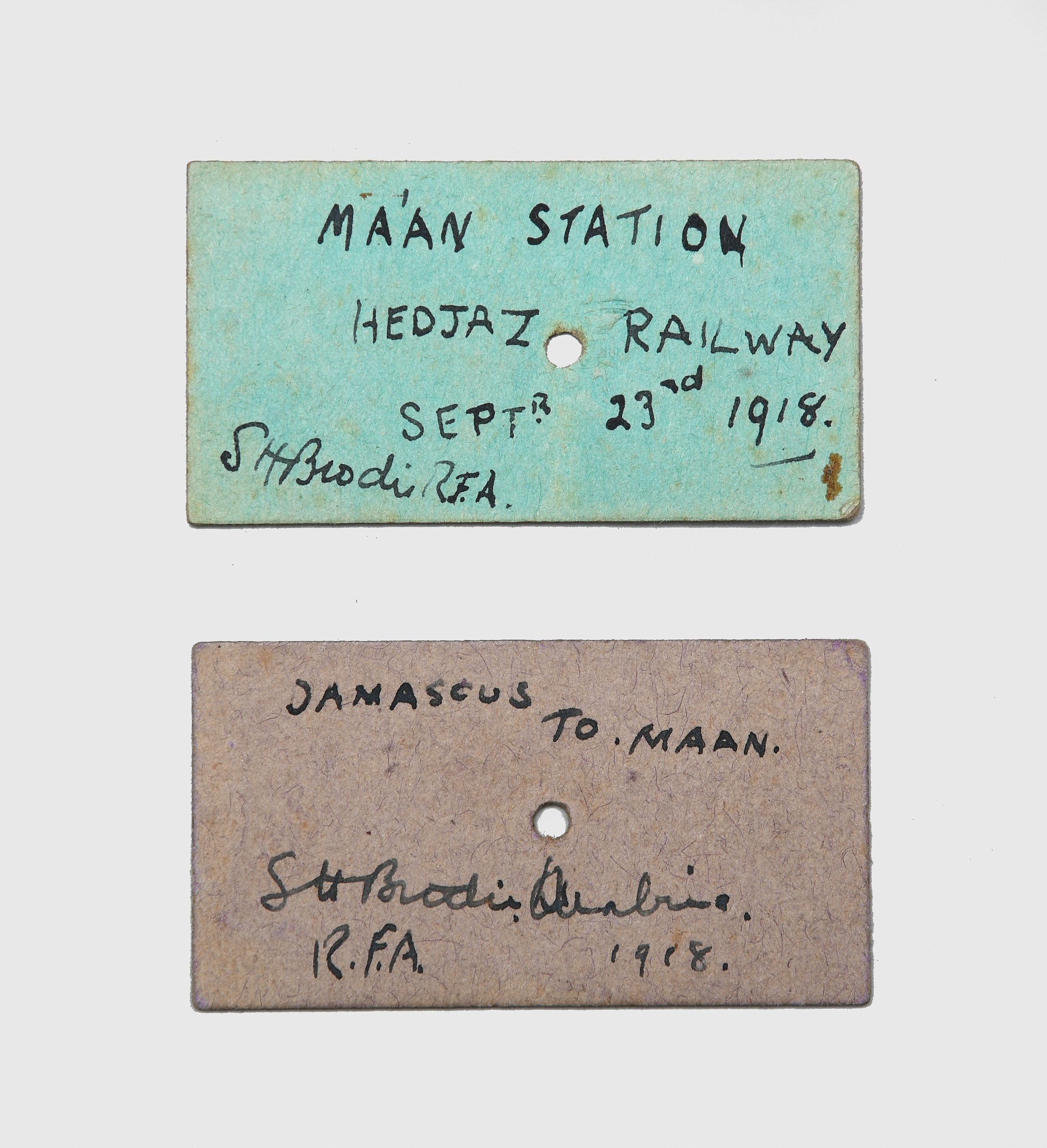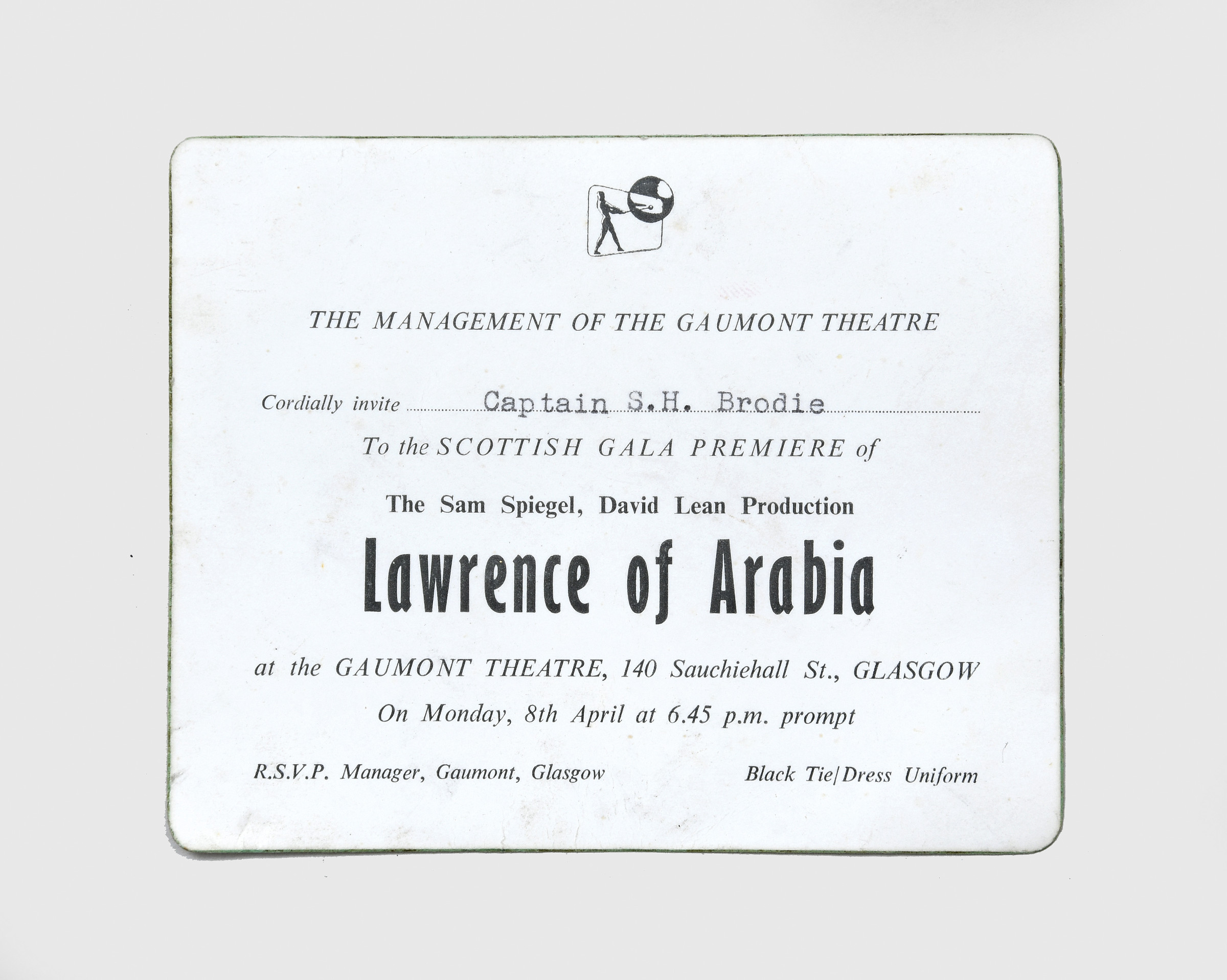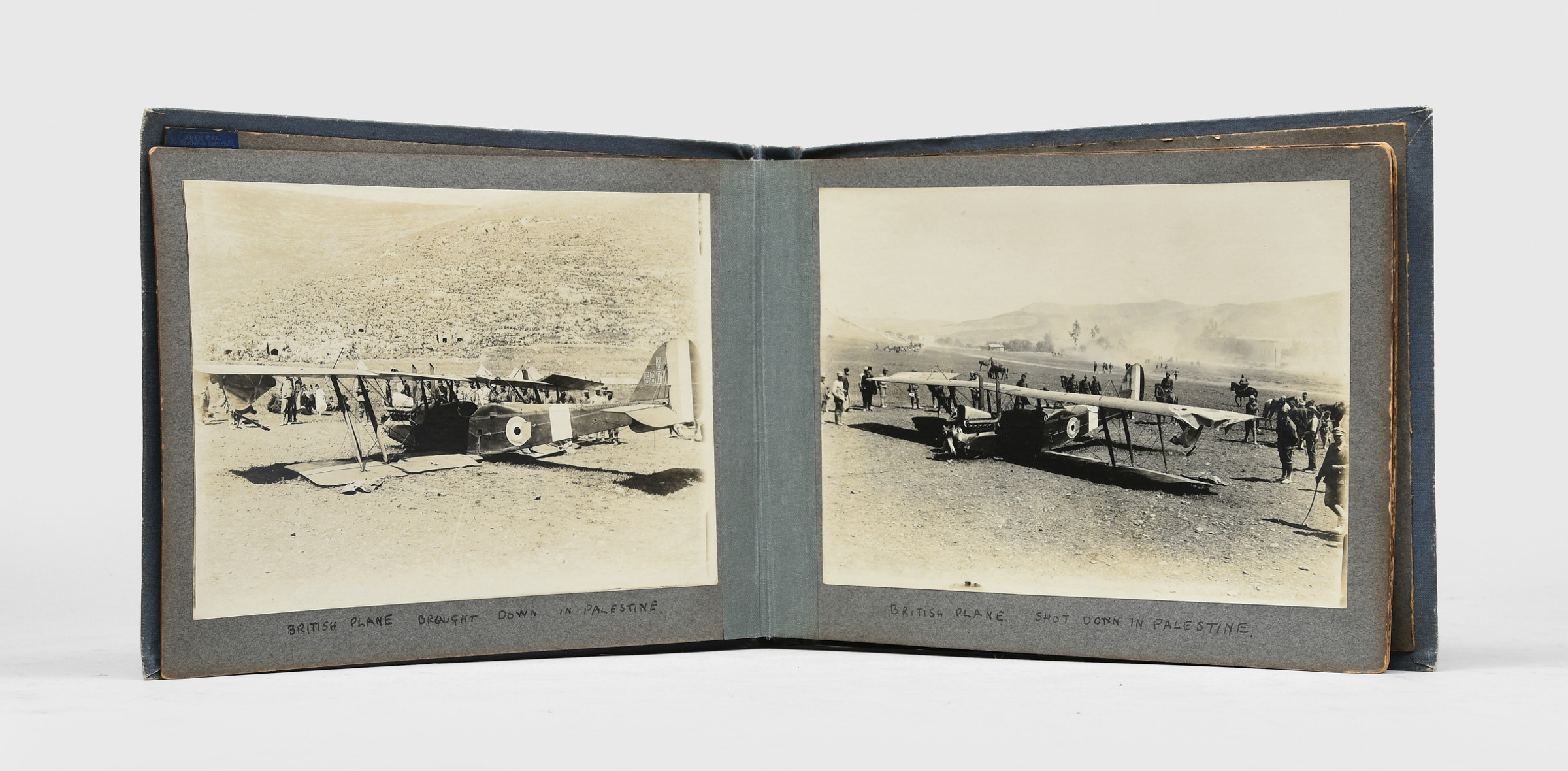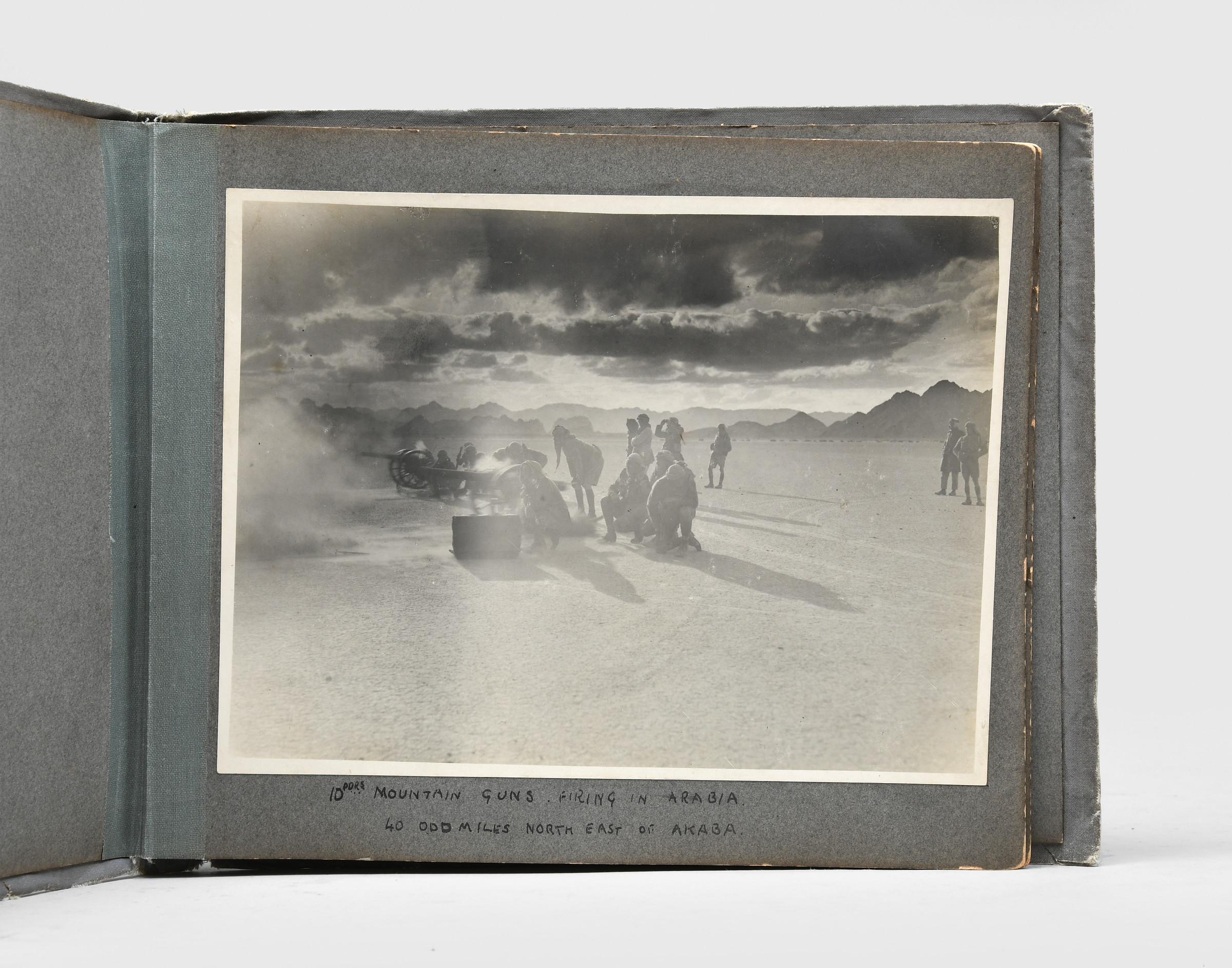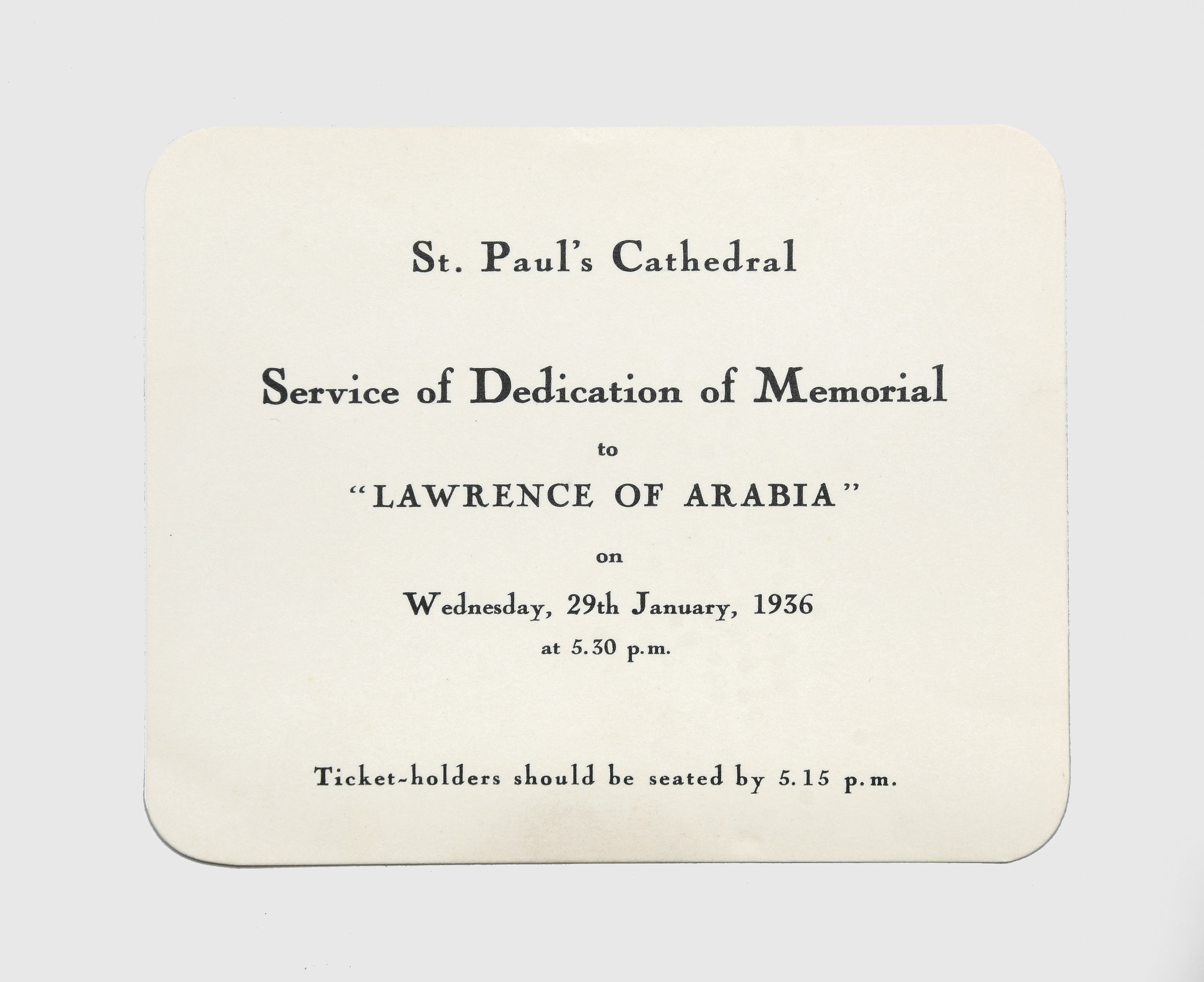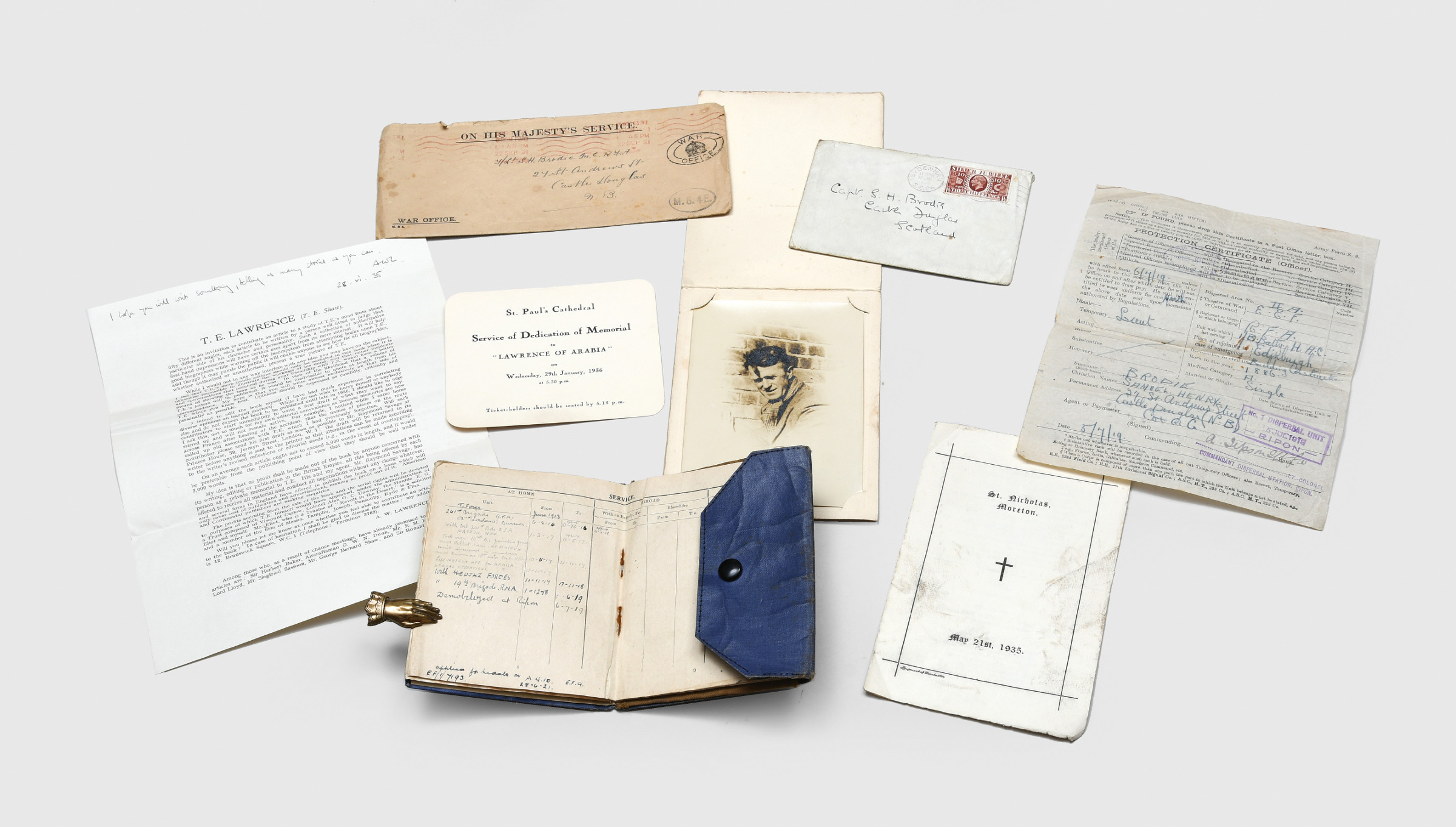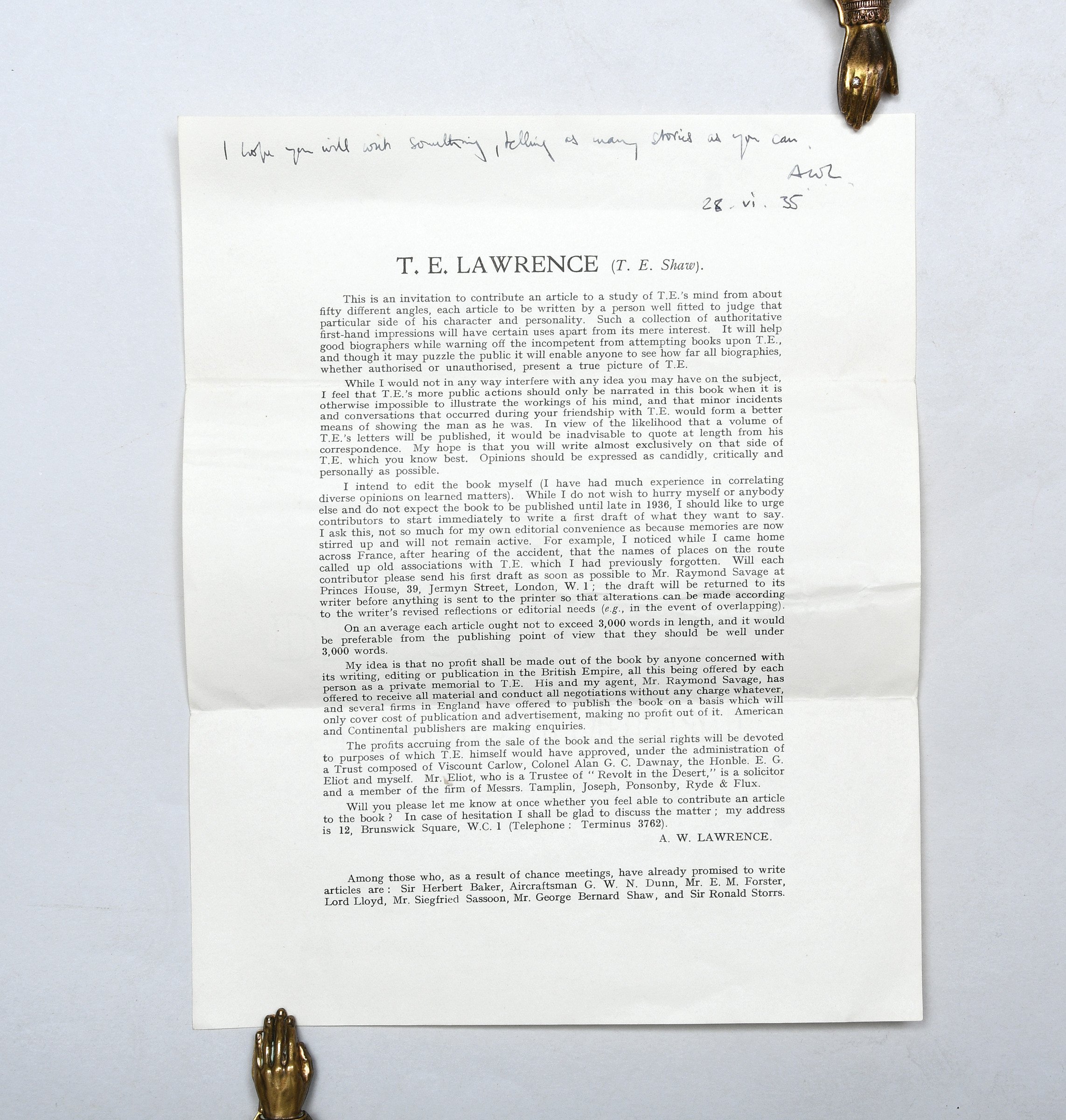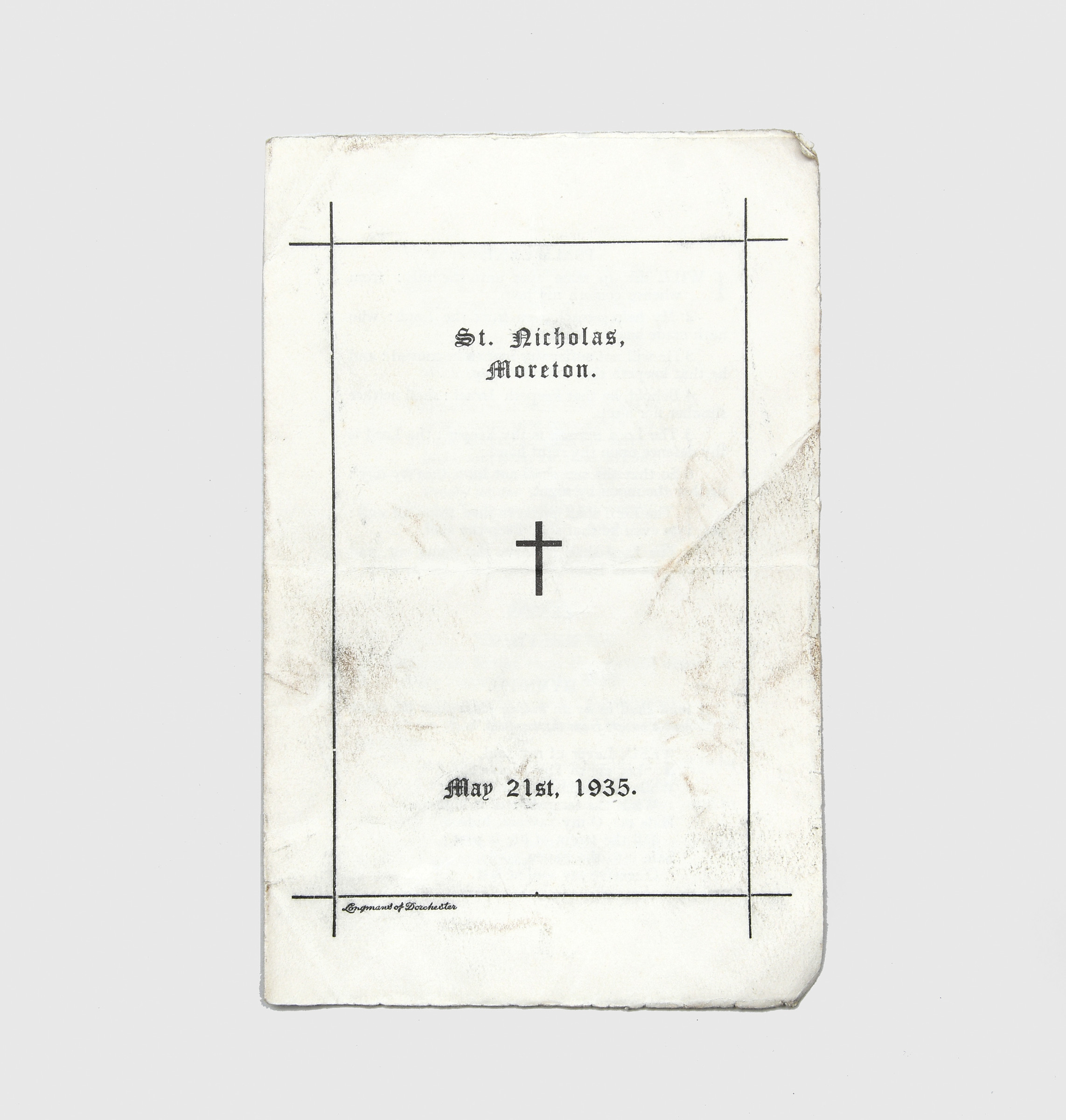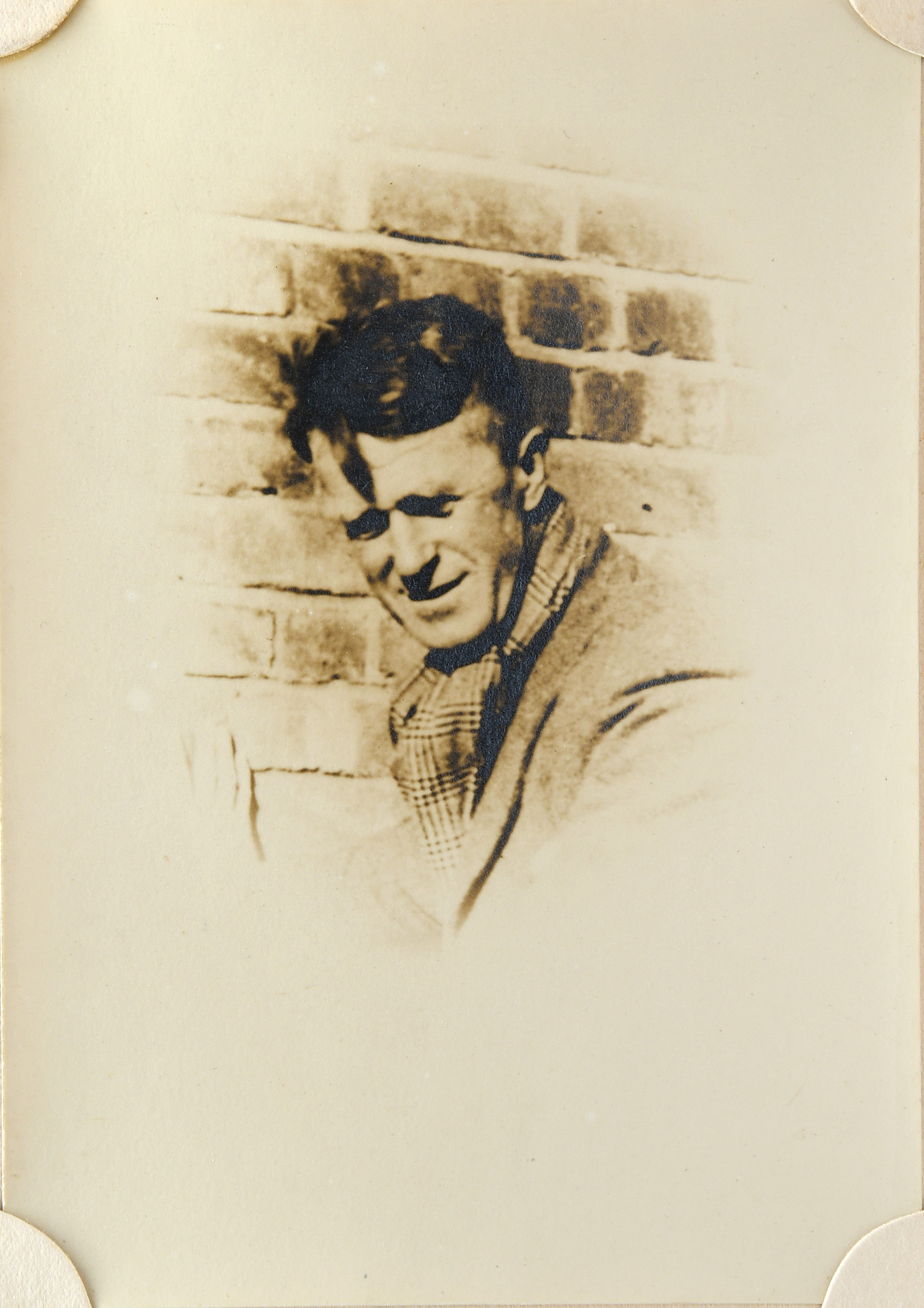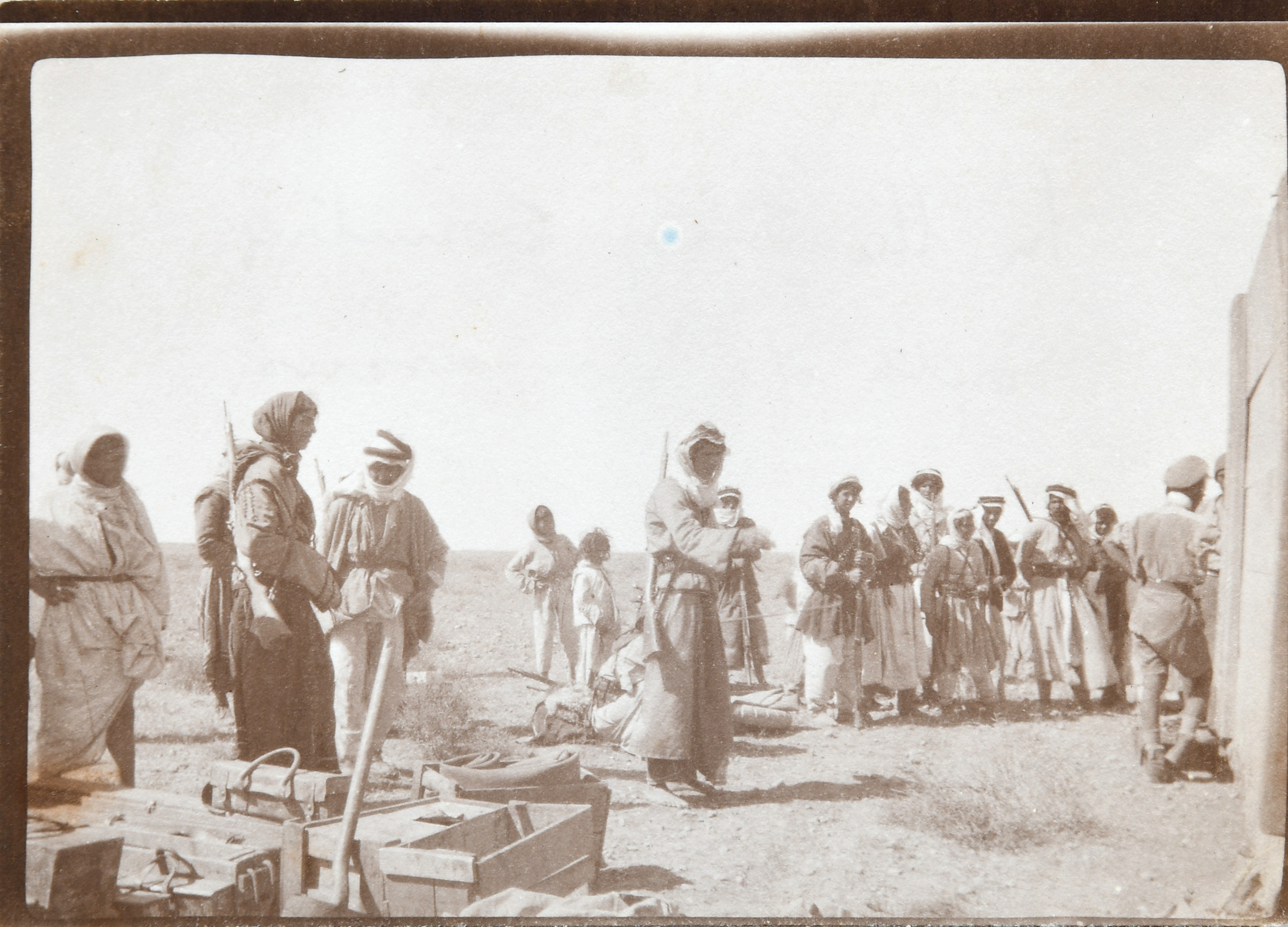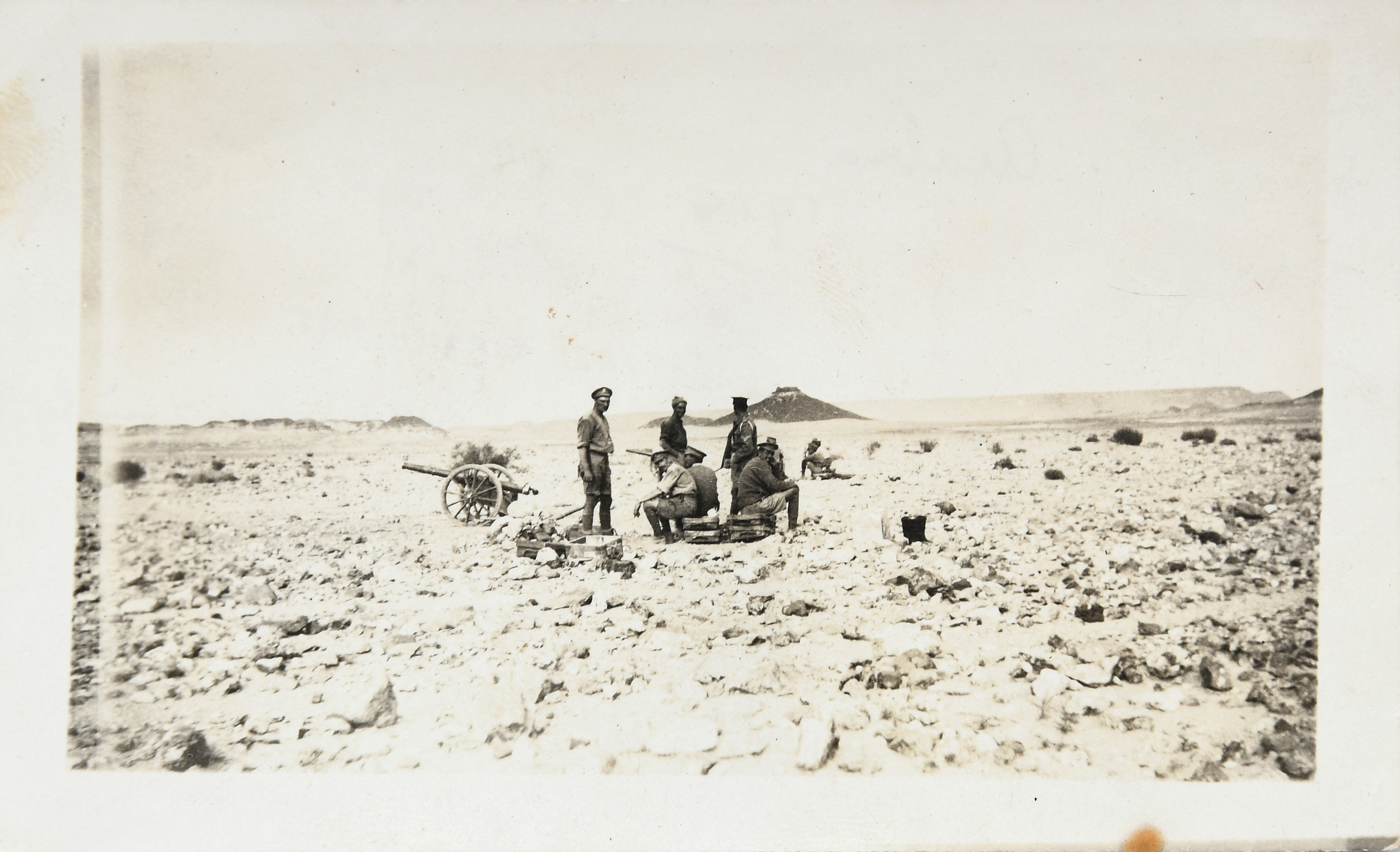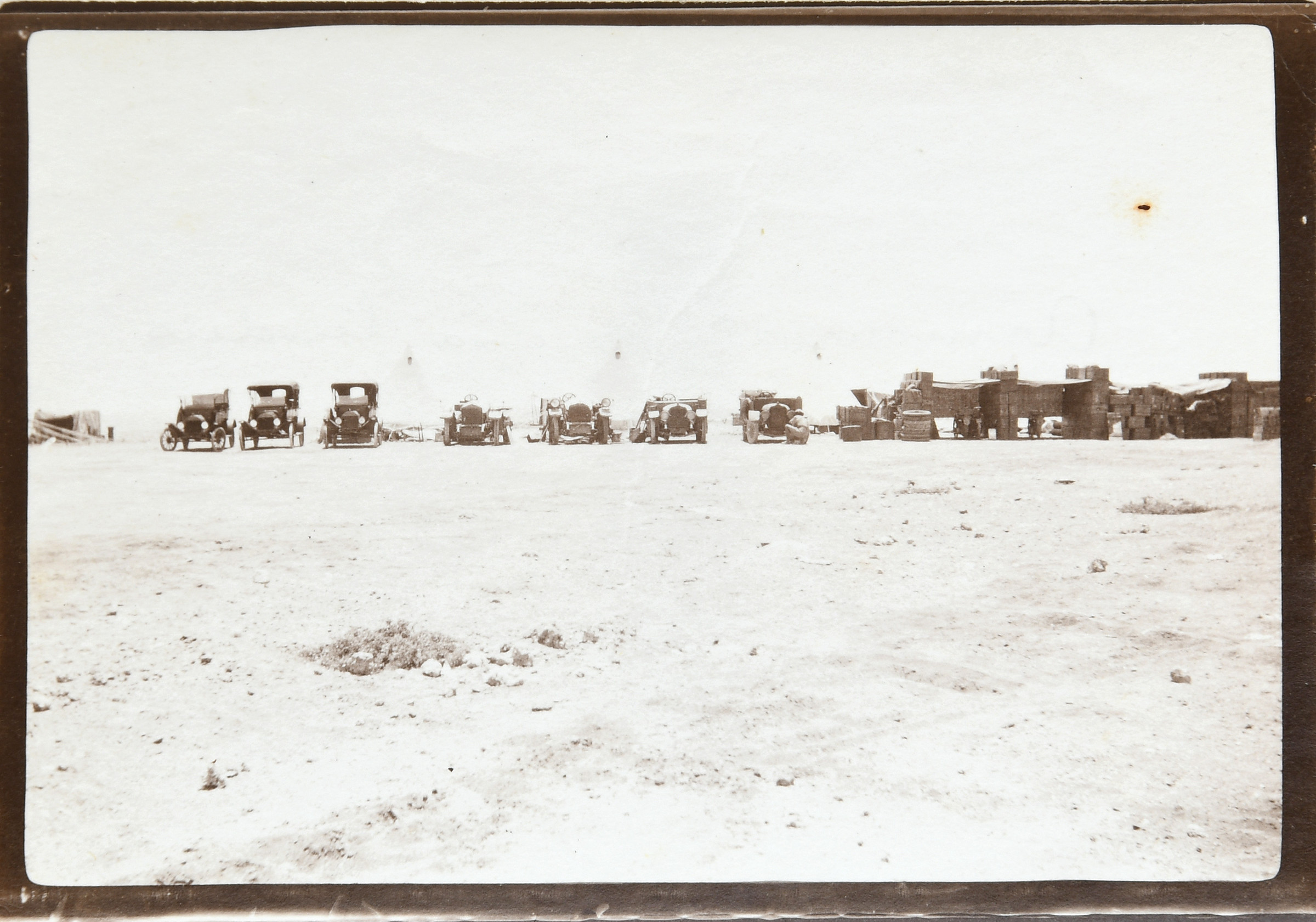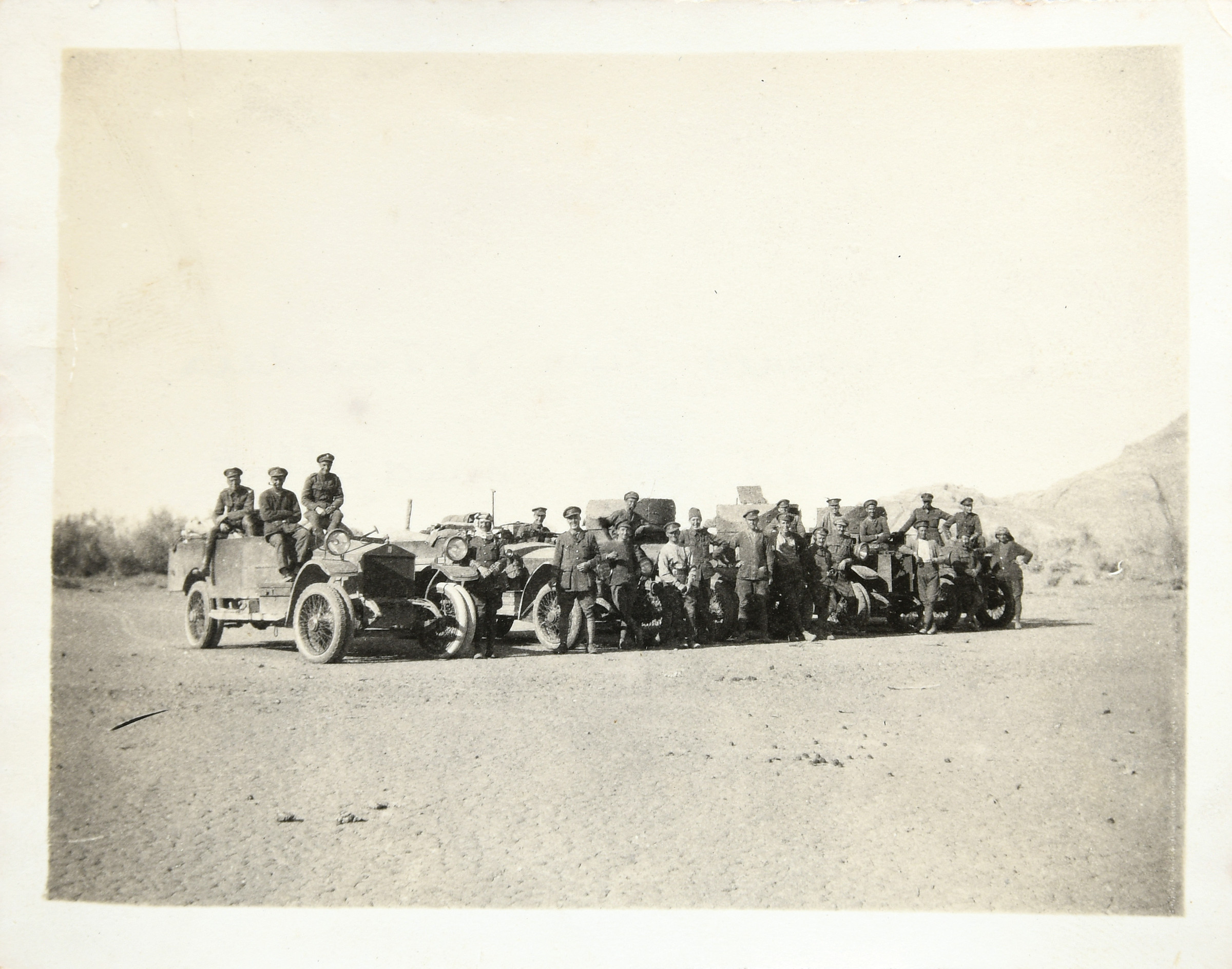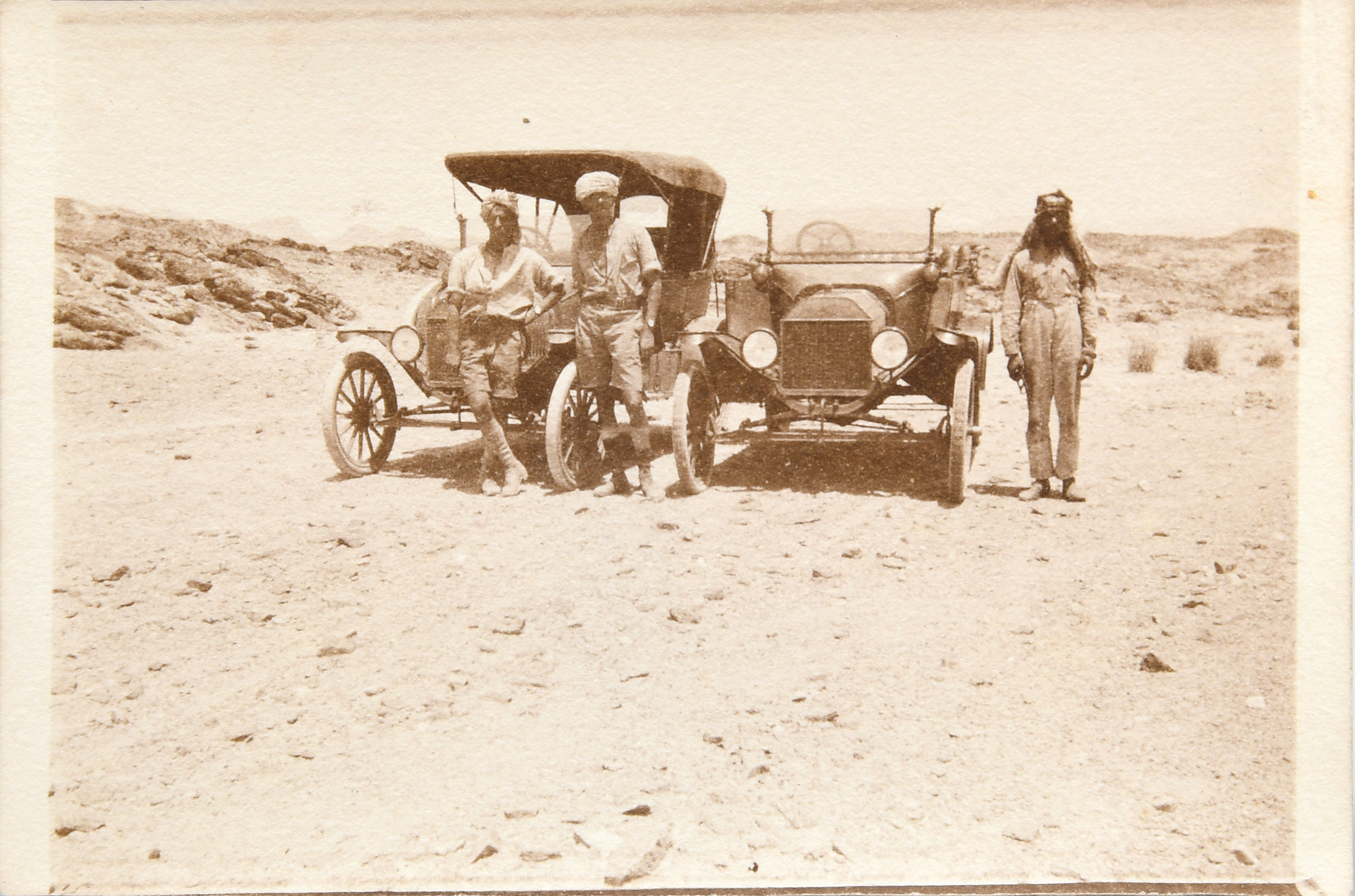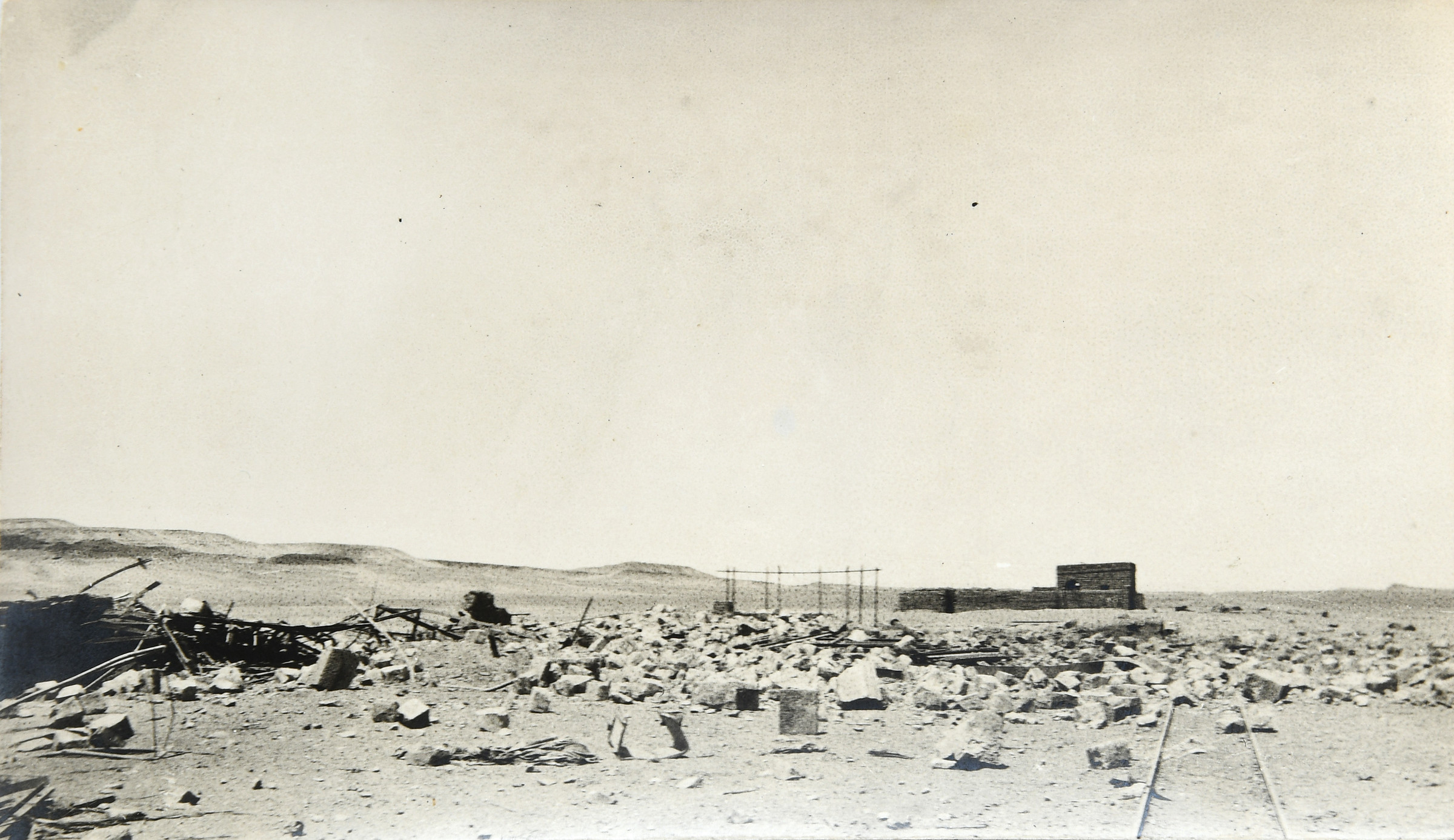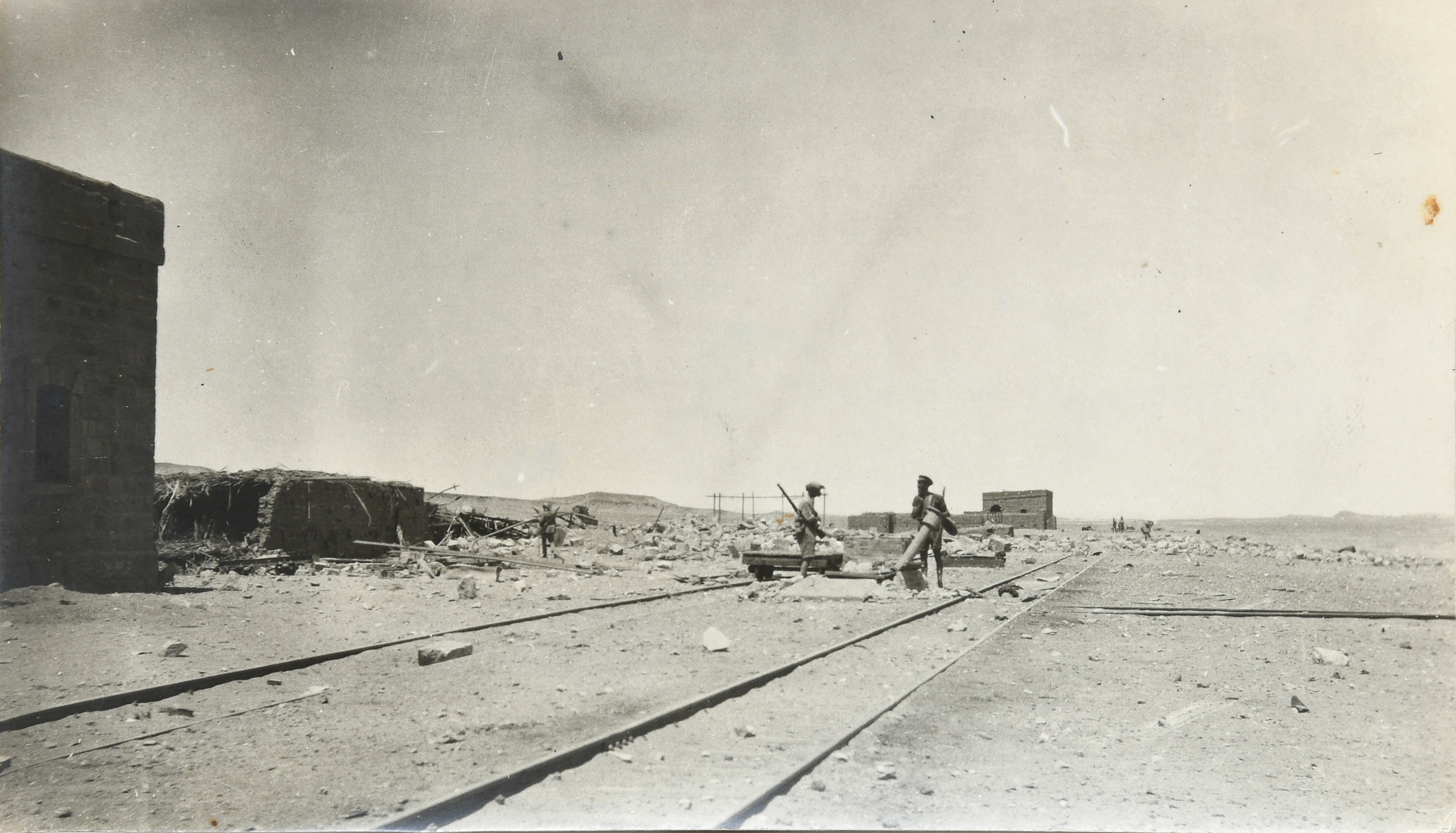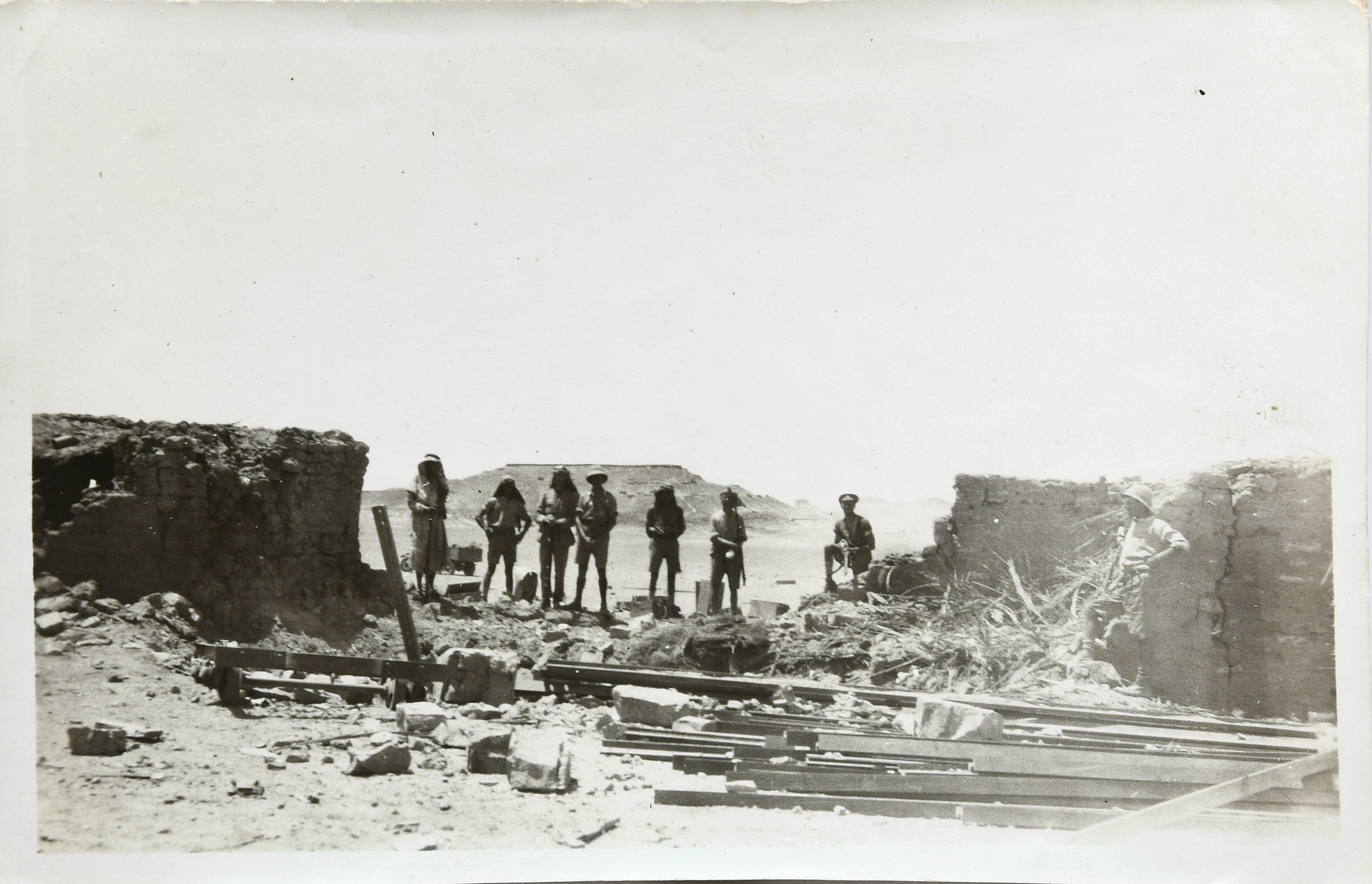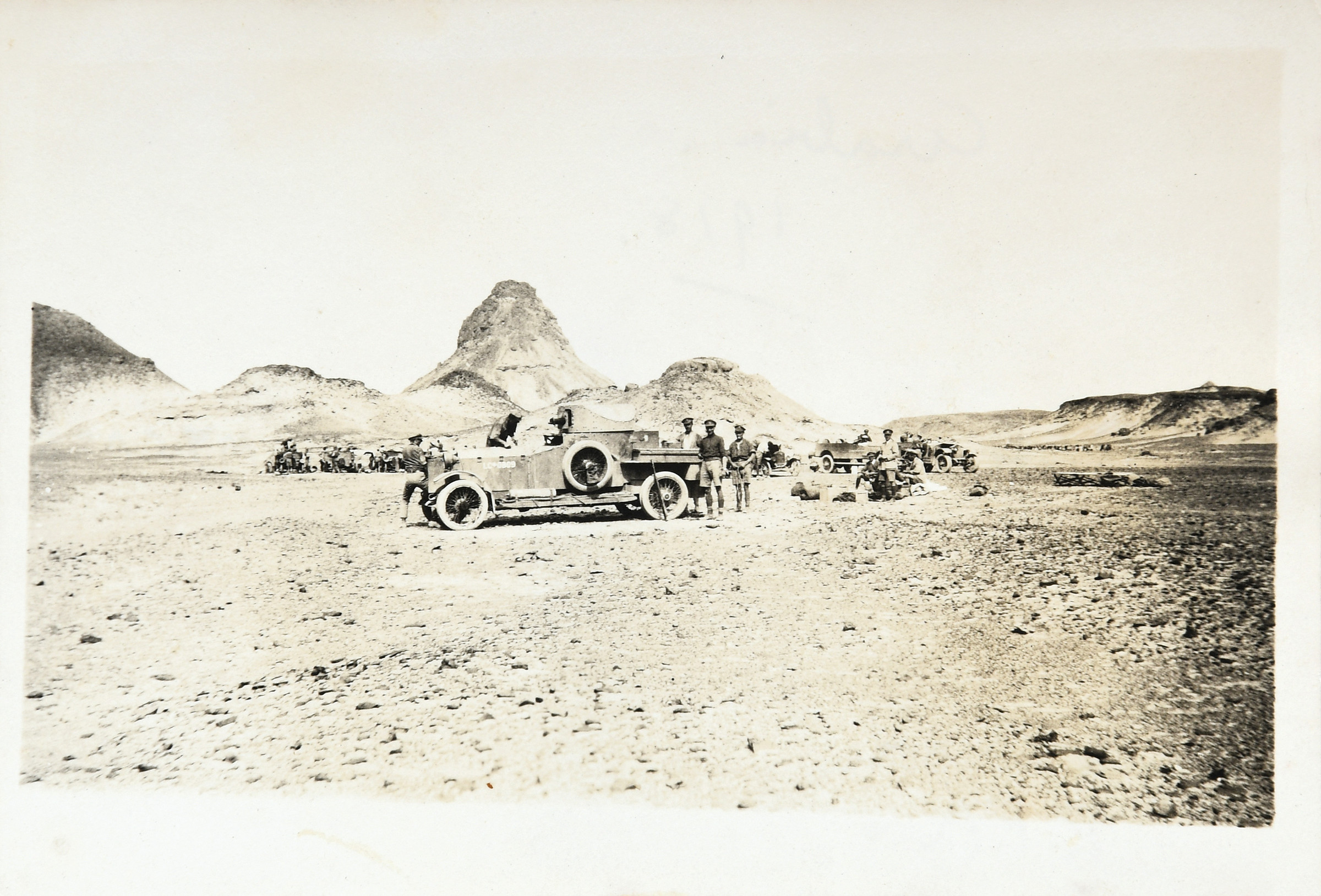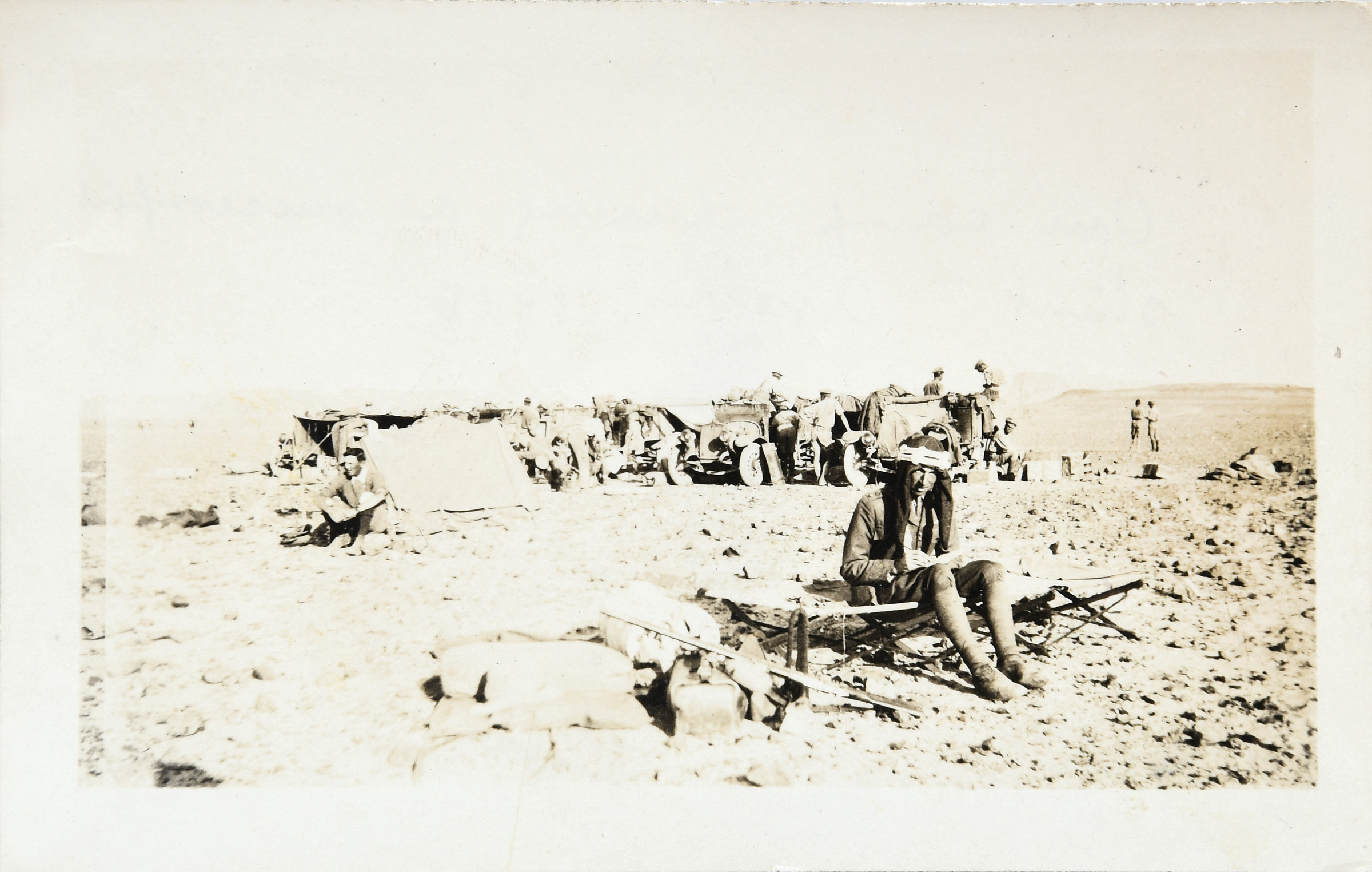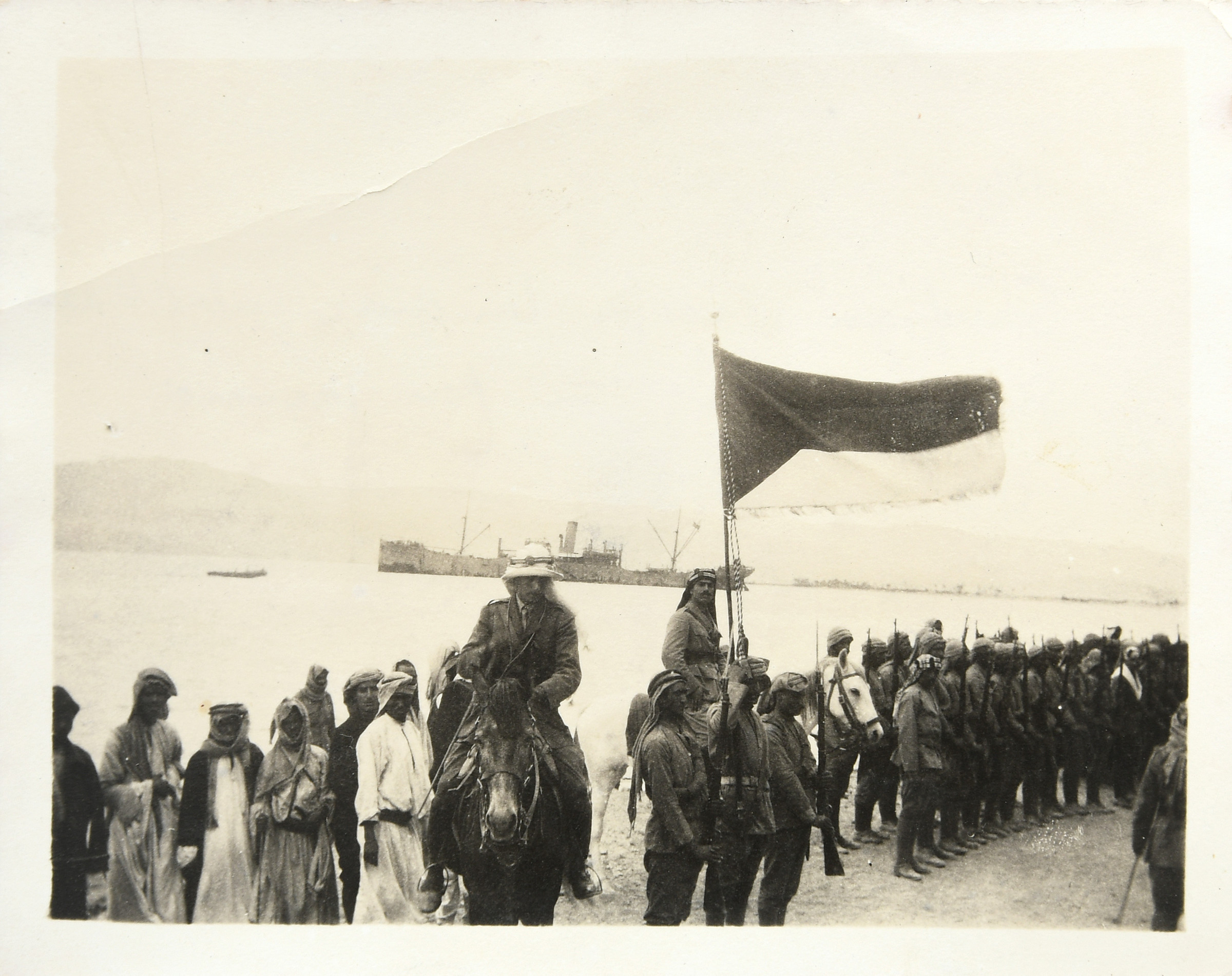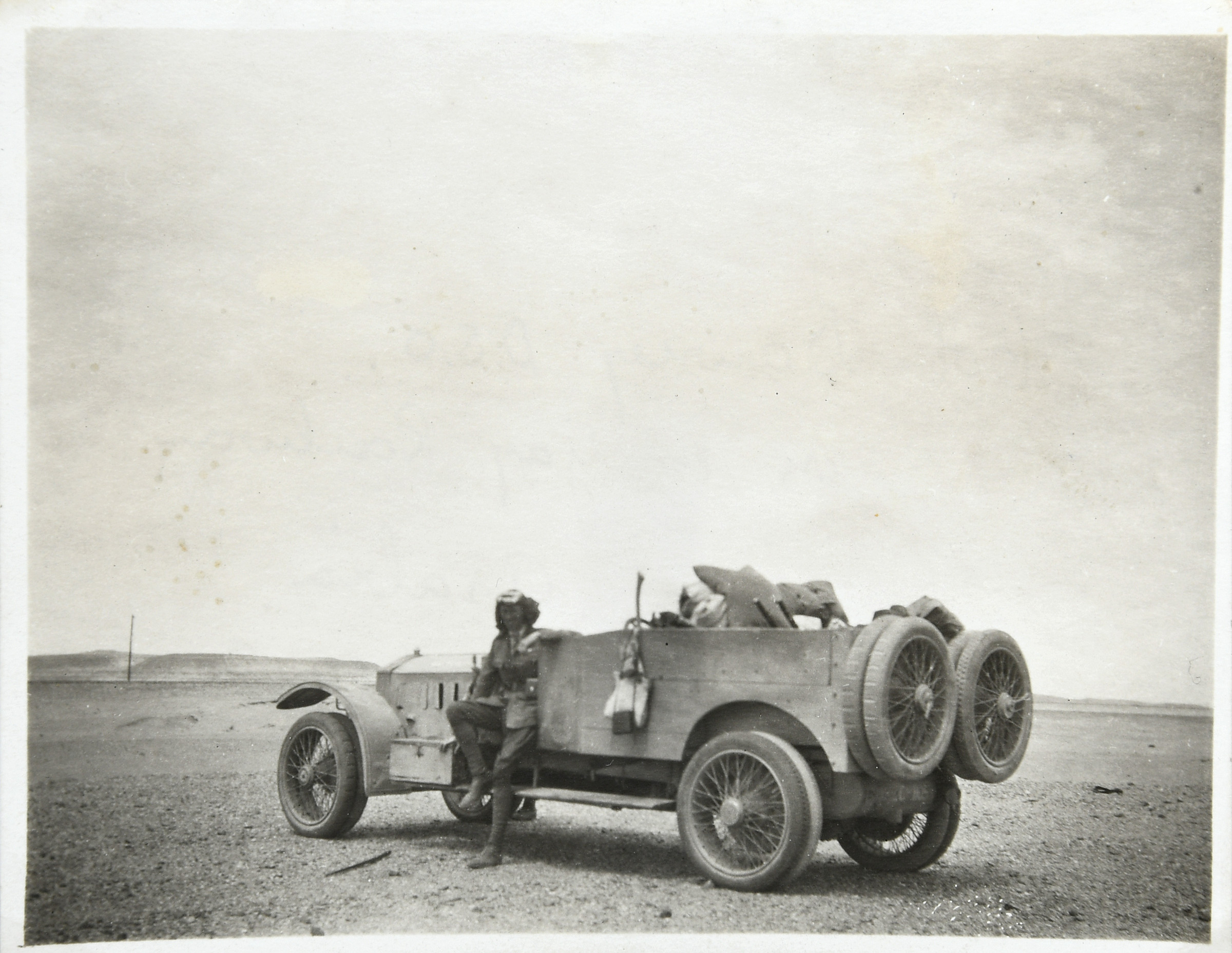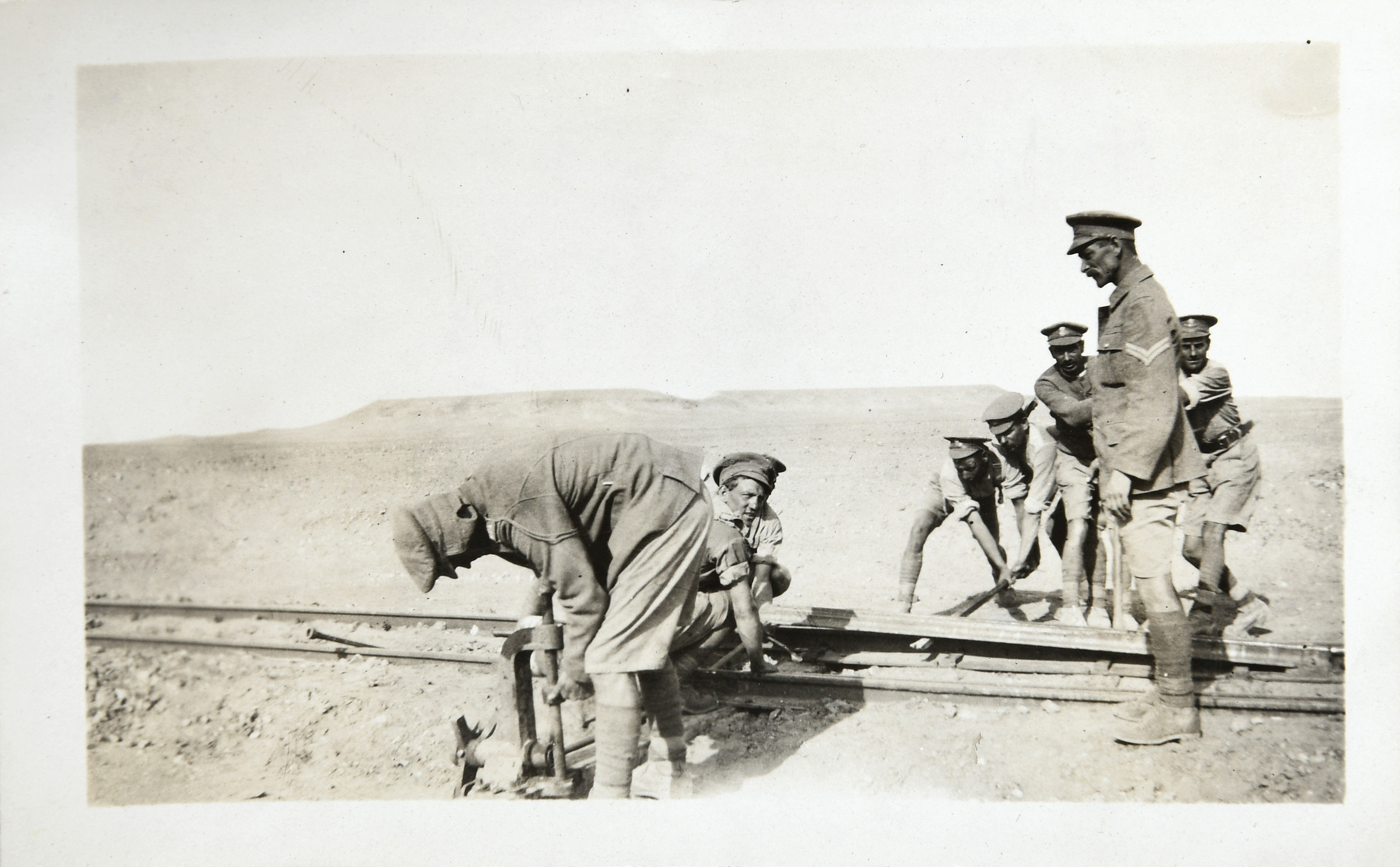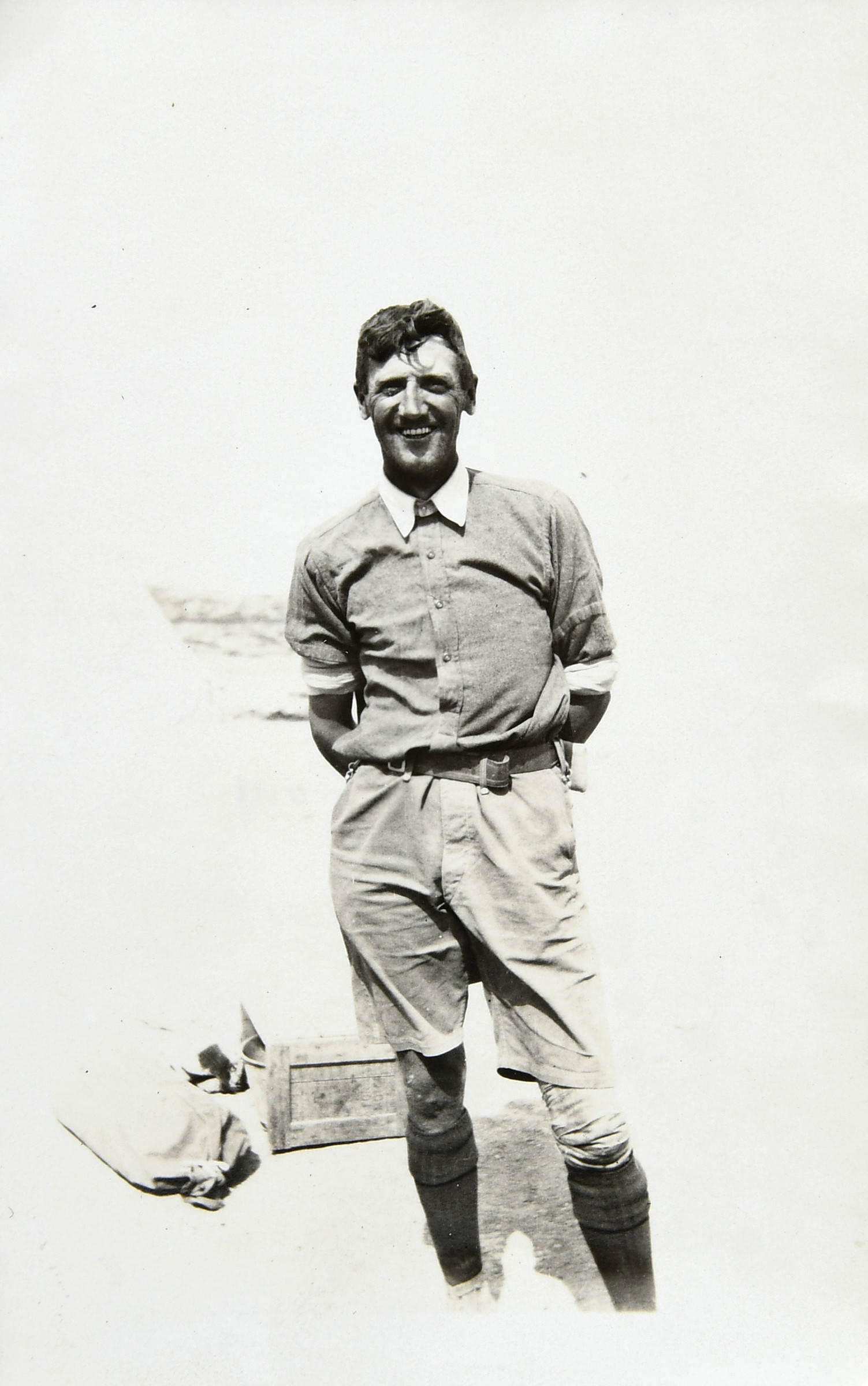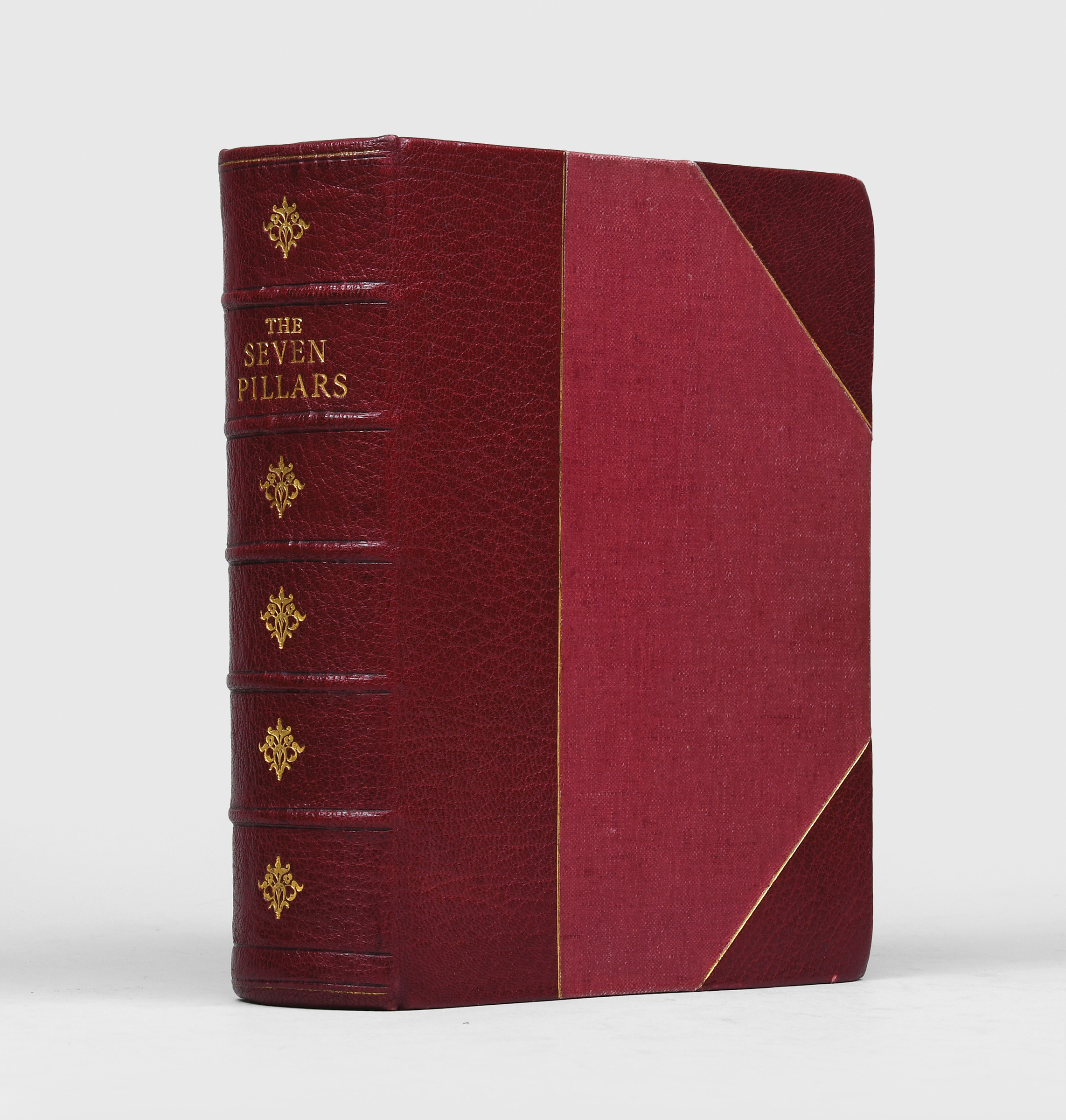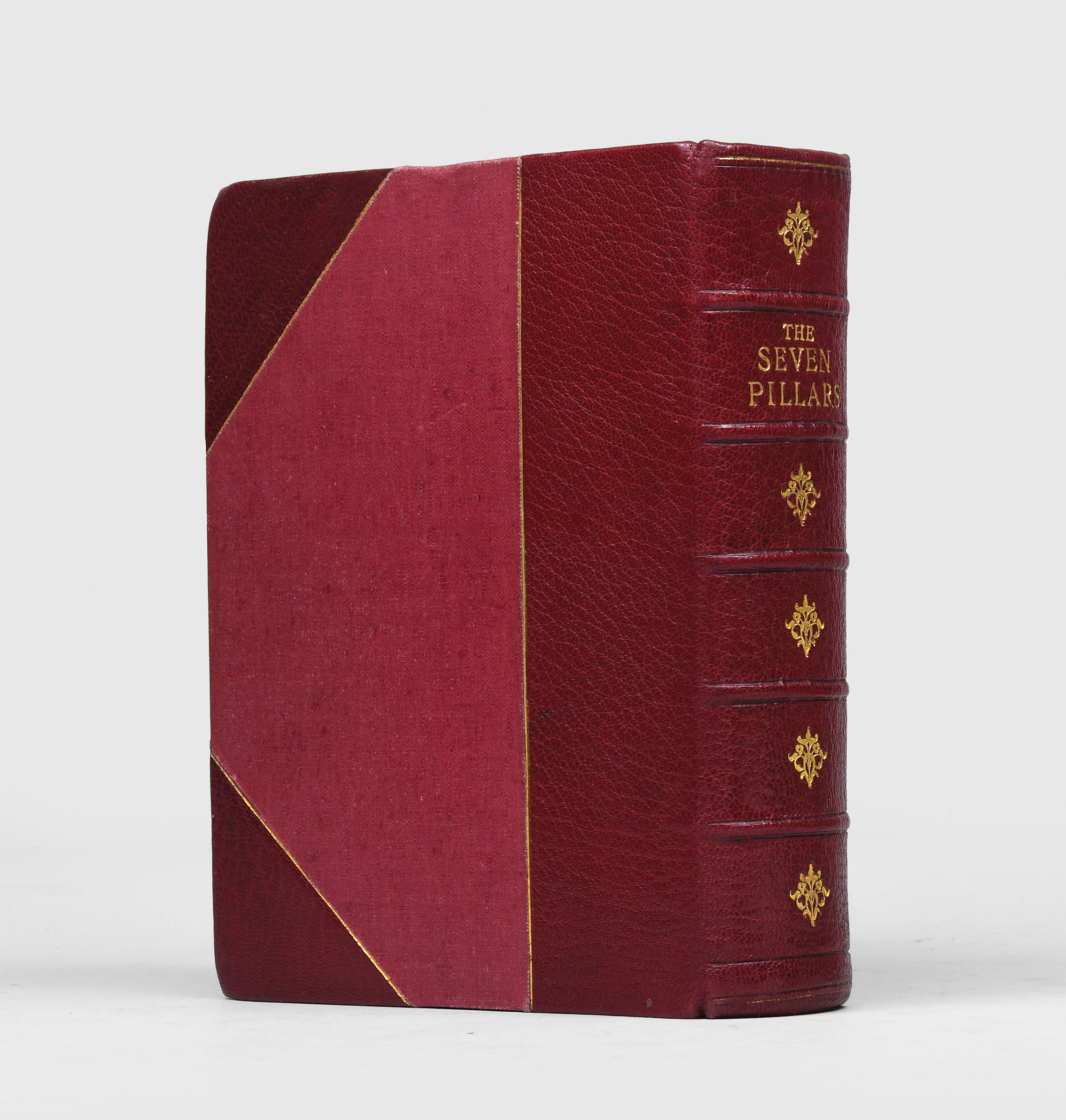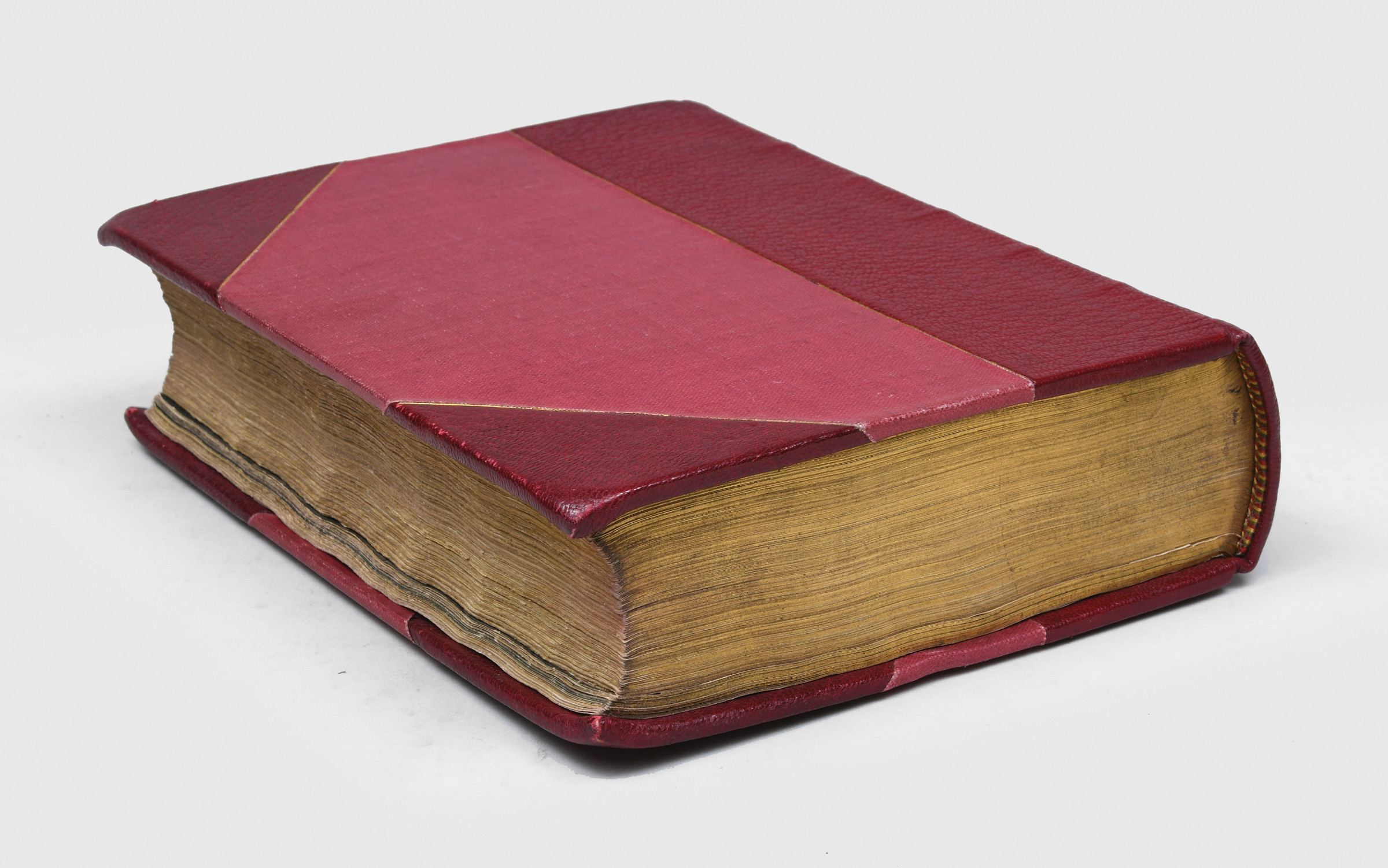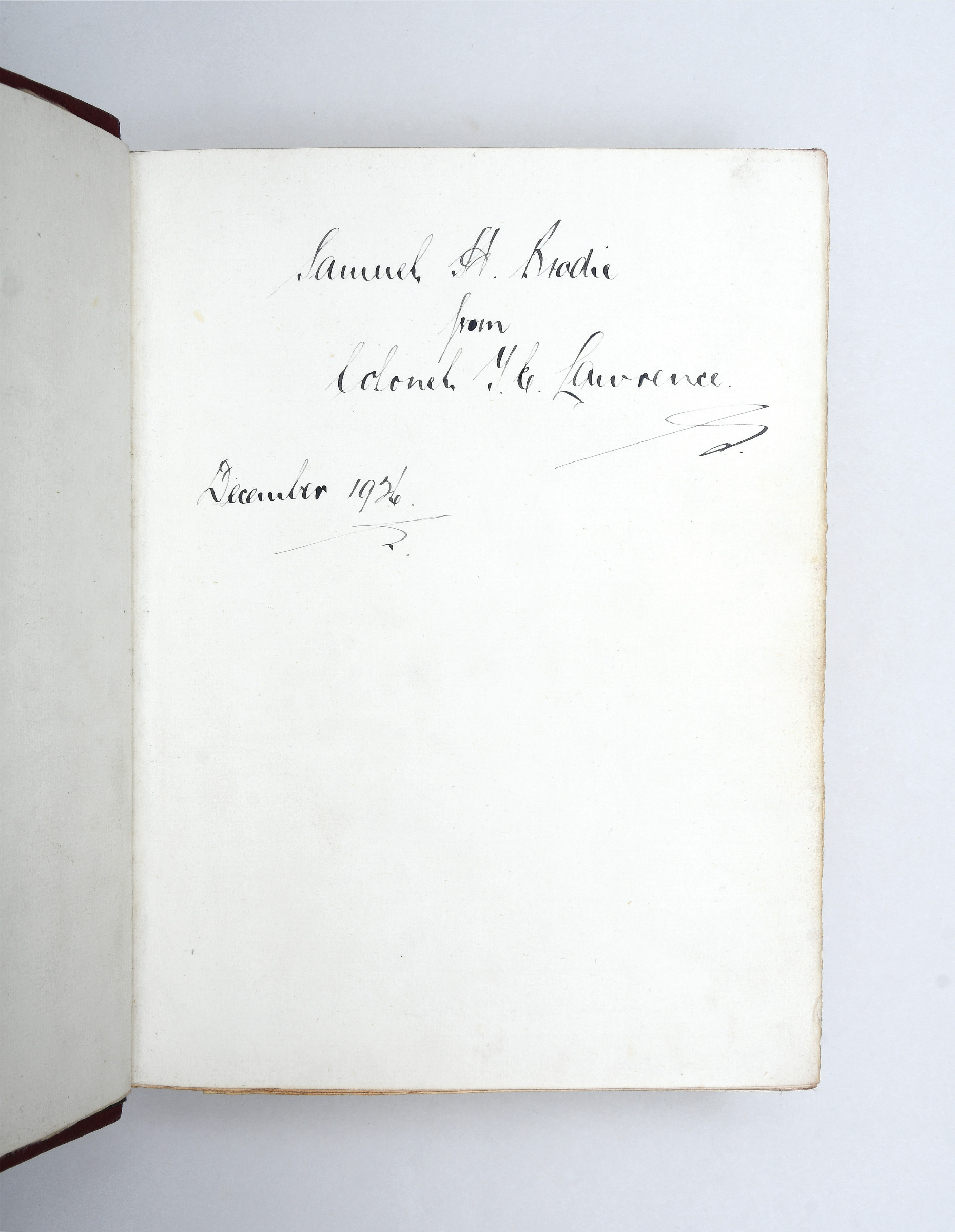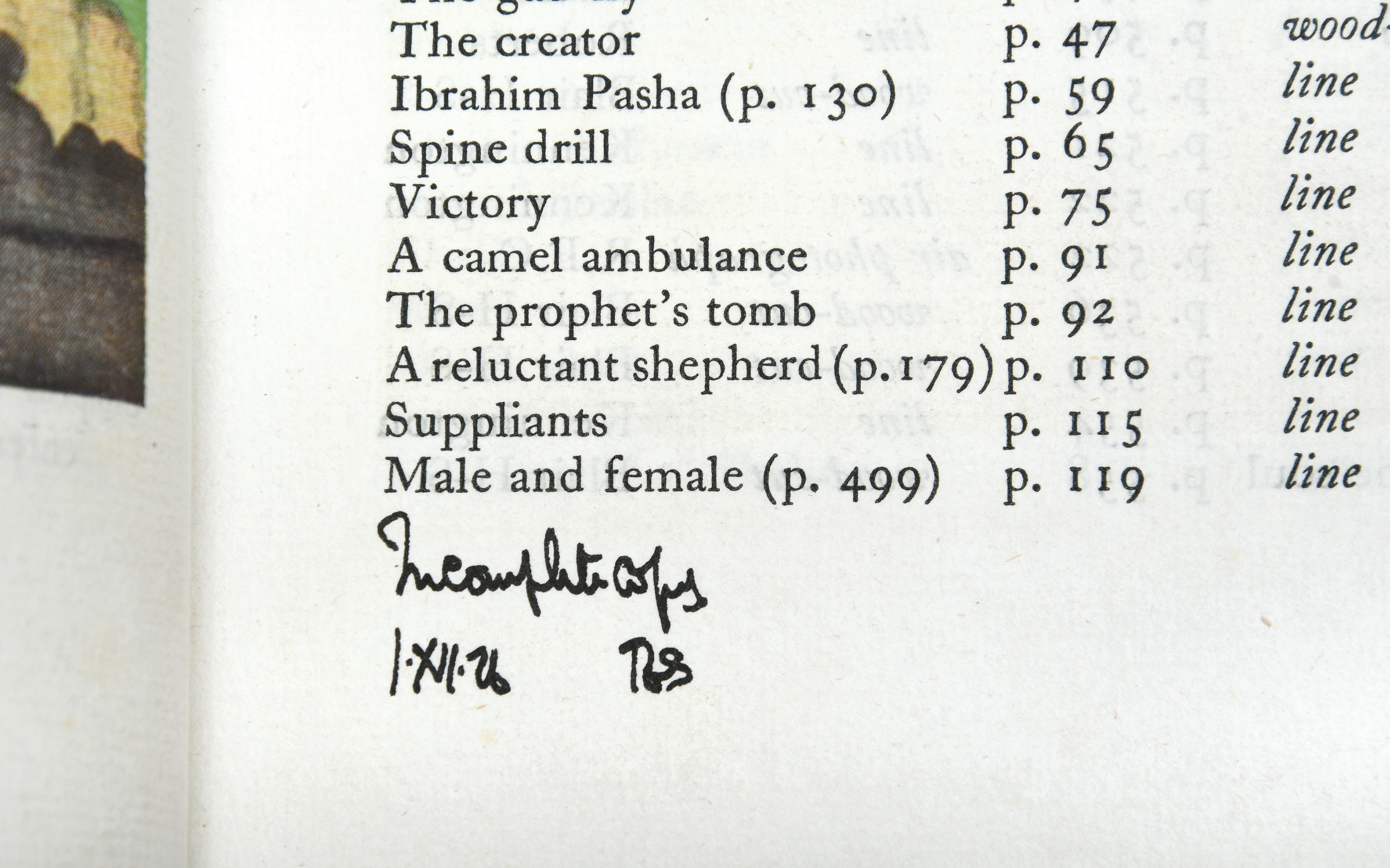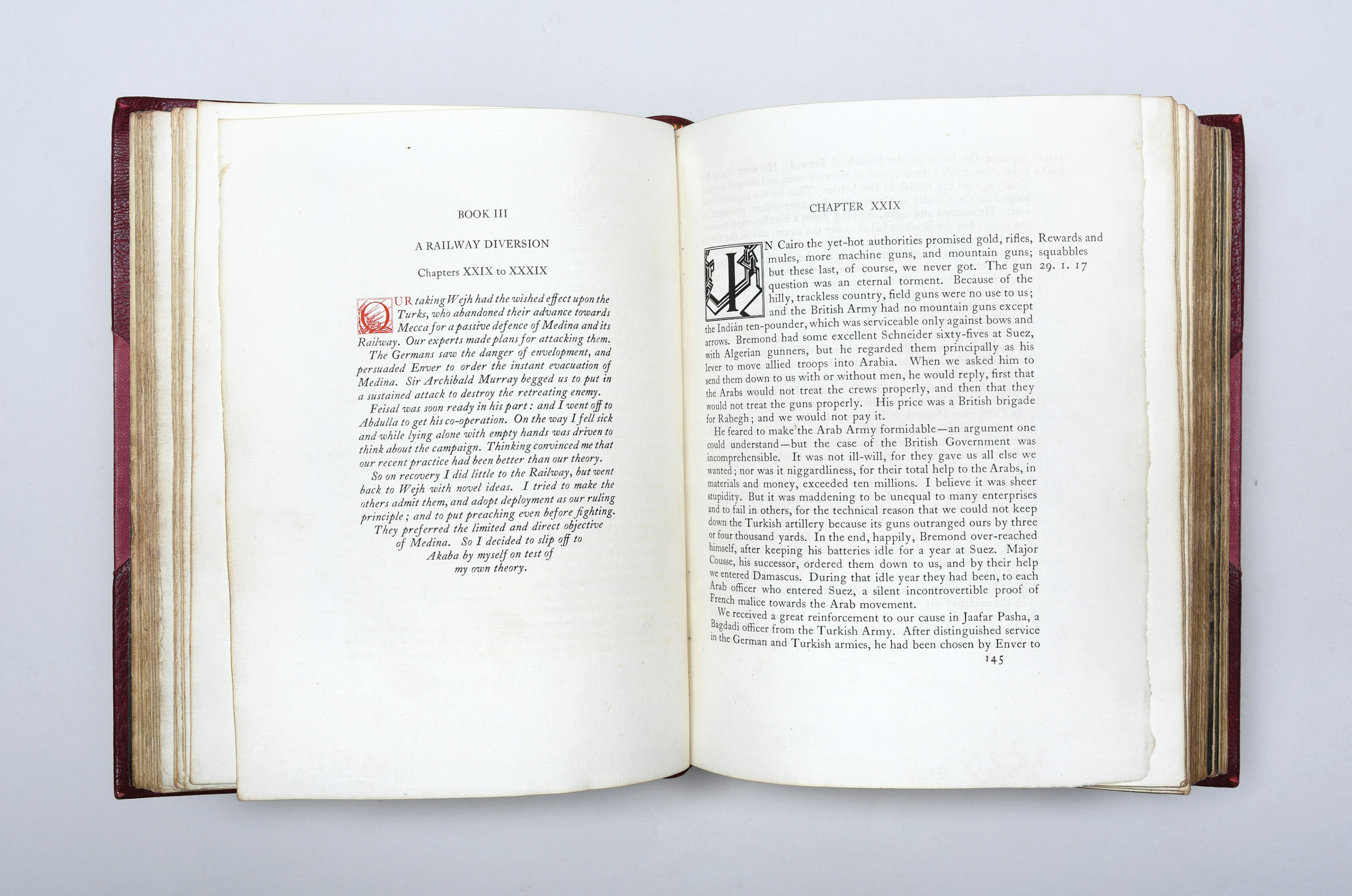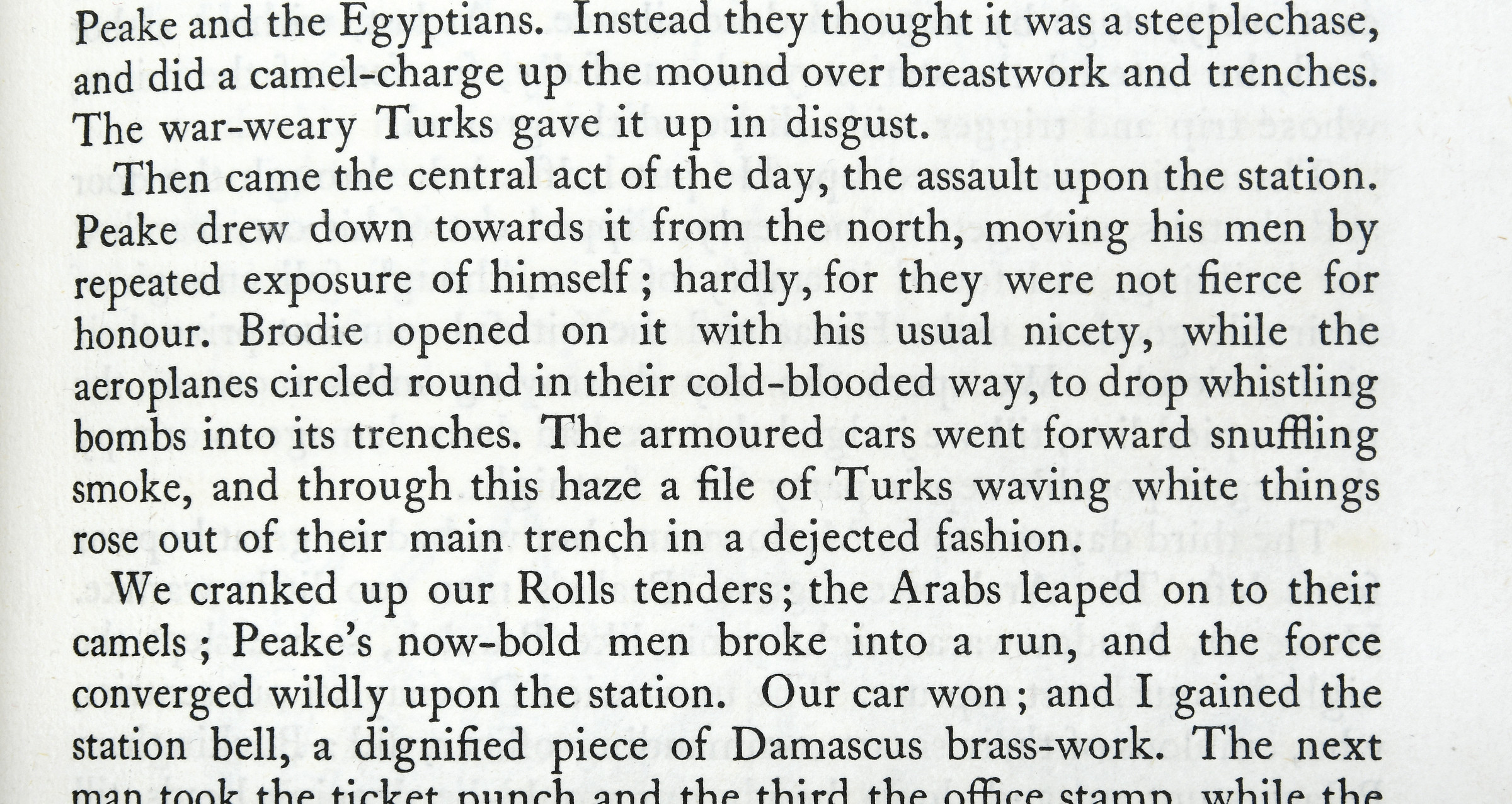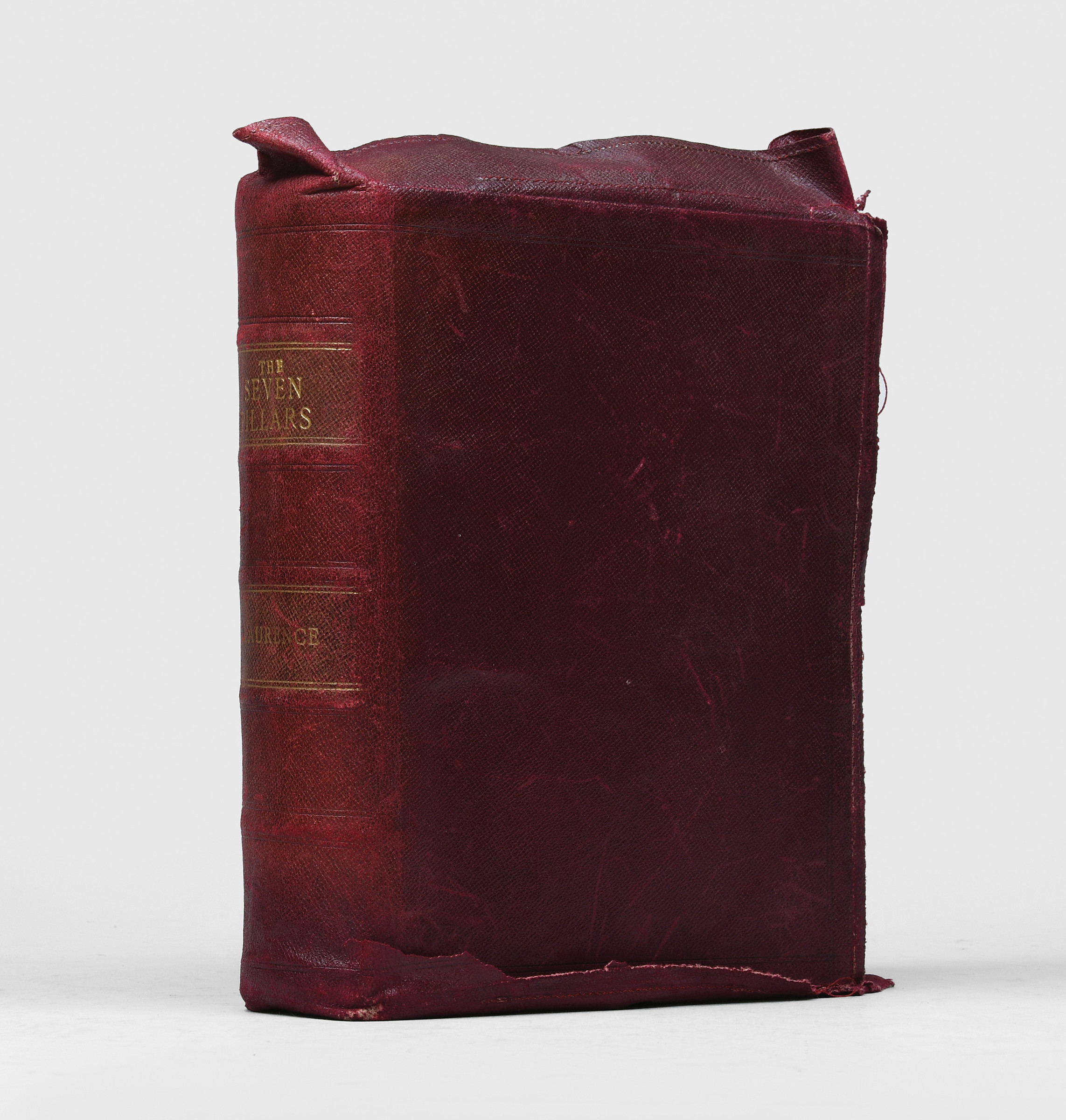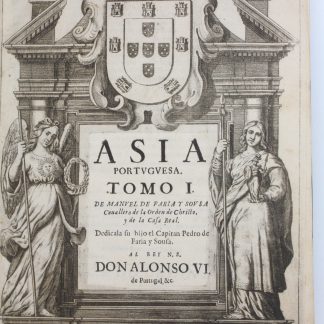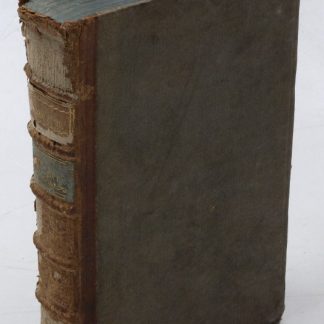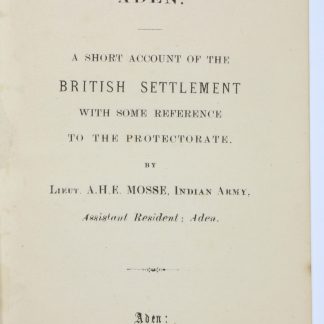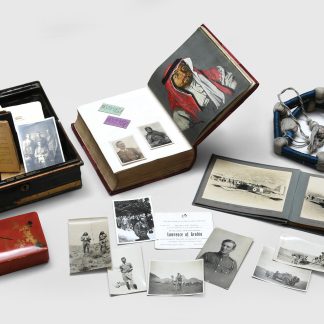Subscribers' edition
Seven Pillars of Wisdom. A Triumph. [Together with:] An archive of memorabilia and over 150 photographs relating to Lieutenant Samuel H. Brodie's service with Lawrence during the Arab Revolt.
4to (186 x 249 mm). Frontispiece and 27 (of 66) plates, many coloured or tinted, of which one double-page, by Eric Kennington, William Roberts, Augustus John, William Nicholson, Paul Nash and others, and 58 illustrations in the text, one coloured, by Roberts, Nash, Kennington, Blair-Hughes-Stanton, Gertrude Hermes and others, initials by Edward Wadsworth; four folding coloured maps, i.e. two maps in duplicate, of which one bound in as frontispiece. Contemporary strong red half morocco by Roger de Coverley & Sons, moderate red cloth sides, spine lettered in gilt, top edge gilt, pictorial endpapers with Eric Kennington illustrations. Housed in a contemporary roan chemise.
€ 200.000,00
An outstanding exemplar of one of the few purposely incomplete copies of the subscribers' edition, presented by Lawrence to his brother-in-arms Lieutenant Samuel H. Brodie. Accompanied by an immersive archive of material that draws us into the world of a serving soldier during the Arab Revolt, in particular the famed assault on the Hejaz Railway, of singular importance in prising open the Ottoman grip on the region.
This copy of "Seven Pillars" is inscribed on a preliminary blank in the hand of Brodie's mother: "Samuel H. Brodie from Colonel T. E. Lawrence, December 1926", and is one of 32 incomplete subscribers' copies, from a total edition of 211, intentionally issued in this way under Lawrence's instructions. These copies were to be reserved and "presented to the men who had served with him in Arabia and who were not able to pay the high price asked for the complete issue" (O'Brien, p. 32); the intentional omission of a number of plates served to prevent these copies from devaluing those that were issued complete. In a letter to H. W. Bailey, a private with the Hejaz Armoured Car Company, Lawrence wrote, "I'm sending free copies of my Arabian yarn to the fellows who helped in the business". Inscribed by Lawrence at the foot of p. XIX: "Incomplete copy I.XII.26 TES", and although lacking the majority of the plates called for in the list of illustrations, this copy does include the "Prickly Pear" plate, most often lacking; page XV is mispaginated as VIII.
In Lawrence's words, Lieutenant Samuel Henry Brodie MC, an indefatigable Scottish artilleryman who rose through the ranks, "seemed able to pick up his unit, and carry it forward with him over every obstacle. On every occasion and in every crisis they were always in place at the right moment". During the Arab Revolt Brodie served as a lieutenant in the Royal Field Artillery (RFA), his unit based at Azrak, an oasis near Aqaba, the jumping off point for Lawrence's famous raids on the Hejaz Railway. Brodie commanded the Ten-Pounder Talbot Battery attached to the Hejaz Armoured Car Company (see Nominal Roll: Hejaz Armoured Car Company, "Seven Pillars of Wisdom", Appendix I). Brodie notes in his record of service (present here) that in March 1917 the Talbot cars and guns were combined at Matruh to form 10th Motor Section RFA and that he was "with Hedjaz Forces" between 11 November 1917 and 17 November 1918, when he transferred to 19th Brigade Royal Horse Artillery.
Lawrence gives a vivid description of Brodie and his mountain gun unit, which was carried on Talbot light trucks: "This section was an oddment which General Clayton [chief of intelligence, Egypt] had seen in Egypt, and had sent down to us in an inspired moment. Its six Talbots, specially geared for heavy work, carried two ten-pounders with British gunners. It was wicked to give good men such rotten tools; yet their spirit seemed hardly affected by the inferior weapons. Their commander, Brodie, was a silent Scotsman, never very buoyant and never too anxious, a man who found difficulties shameful to notice, and who stamped himself on his fellows. However hard the duty given them, they always attacked it with such untroubled determination that their will prevailed. On every occasion and in every crisis they would be surely in place at their moment, perspiring but imperturbable, with never a word in explanation or complaint" ("Seven Pillars", present ed., p. 440). Brodie also clearly had a keen eye when it came to range finding (that essential string to a gunner's bow), and Lawrence describes admiringly his accurate shelling of the Turkish-held station at Tell Shahm in April 1918 as being conducted "with his usual nicety" (ibid., p. 507).
The core of the accompanying archive is the collection of over 150 original photographs, loose and in albums, mostly in smaller "snapshot" formats, but of great immediacy, the majority of them relating directly to the Arab Revolt and with telling annotation relating to location, personnel, and the specifics of action. The majority of these are sepia-toned bromide prints on matte paper. Highlights include a quantity of wonderfully evocative images of Brodie's unit in the field, including Brodie himself, his second-in-command George Pascoe, and attacks on strategically important stations along the Hejaz railway. One key moment from the campaign pictured here is the successful attack in April 1918 at Tell Shahm, led by Colonel Alan Dawnay and Captain H. S. Hornby; an episode referred to by Brodie in his contribution to "T. E. Lawrence by His Friends" (1937): "Colonel A. Dawnay took us out to break the railway at Tel-el-Sham". Images show Brodie and his unit encamped at Tooth Hill, a regular jumping off point for attacks on the railway; the war diary for Brodie's unit recording that Lawrence visited the camp there. Another image shows the view from an Ottoman strongpoint defending the railway, captured during the attack, showing the railway and Tooth Hill in the background. Other images illustrate the 8 August 1918 attack at Mudawwara, a key strategic station south of the heavily fortified Ottoman stronghold at Ma'an. Brodie's snapshots show the destroyed station from different positions, including images of shattered buildings and a shot of the explosion that destroyed the well. Some four striking and hugely evocative images were taken on the beach at Aqaba in November 1917, a number including "Sherefian Troops" landing and their flag being raised; these presumably the troops of Sherif Hussein bin Ali of Mecca.
One outstanding photograph appears at the opening to a dilapidated album: a superbly atmospheric image captioned by Brodie, "10 pdrs Mountain Guns. Firing in Arabia. 40 odd miles north east of Akaba"; this was not taken by Brodie and has been attributed to Lowell Thomas's photographer Harry Chase; interestingly, it clearly shows the British gunners wearing the traditional Arab "agal" and "keffiyeh" (head circlet and head covering). A group of six large photographs (160 x 205 mm) feature aircraft, mainly British, four of these showing some 100 machines assembled for inspection in the desert, part of which may be X Flight of the Royal Flying Corps which was put together at Lawrence's request in order to support Feisal's Northern Arab Army; some images show urban scenes at Akaba, Ma'an, and Wedj. Another album contains similarly larger format images that were clearly spoils of war, as they show German and Austrian materiel, including a German camp in Palestine, and three images of a downed British plane (identified by us as an RE8 of 142 Squadron, shot down over Nablus in April 1918). Among the ephemera are two tickets for the Hejaz Railway, both annotated by Brodie: one of which is dated 23 September 1918 at Ma'an station, which coincides with the action known as the Third Transjordan attack (19-25 September).
Accompanying the photographs is an Arab "agal" worn by Brodie during the campaign (among the images he is pictured wearing one), formed of a double circlet of light grey silk threads bound at intervals with blue-green silk threads and copper wire, terminating in two loops connected by a cord with a tassel of grey silk threads (approx. 990 mm long without cord, some light soiling and staining, a few threads loose and fraying). In Lawrence's famed "Twenty-Seven Articles", jotted down in August 1917 and intended for the guidance of British officers working alongside their Arab allies, and now close-to axiomatic in the doctrine of asymmetric warfare, he advised: "wear an Arab headcloth when with a tribe. Bedu have a malignant prejudice against the hat, and believe that our persistence in wearing it (due probably to British obstinacy of dictation) is founded on some immoral or irreligious principle. A thick headcloth forms a good protection against the sun, and if you wear a hat your best Arab friends will be ashamed of you in public" (cited in Wilson, "Lawrence of Arabia", p. 963).
Rounding off the collection is a small group of memorabilia pertaining to Brodie's post-war and posthumous relationship with Lawrence and his legend, including a card from Lawrence's mother thanking Brodie for his condolences; his invitation to the funeral together with a photograph of him in the cortege; invitations to the service of dedication of the Lawrence memorial at St Paul's Cathedral, and to the premier of the David Lean film. Also present is the form letter soliciting contributions to "T. E. Lawrence by his Friends" (1937) and Brodie's retained copy of his piece for publication, sent to the editor A. W. Lawrence, T. E.'s brother. Brodie recounts Lawrence's arrival at his encampment the night before the attack at Tell Shahm: "In the small hours of the morning my sentry challenged, not someone advancing from the plain in front, [but] someone dressed in white advancing from our rear. This was Colonel Lawrence. He greeted me with his usual 'How do Brodie', and asked for Colonel [Dawnay]. I told him where to go and with thanks he left us". This was reprinted by A. W. Lawrence in a slightly altered form.
Extremities lightly rubbed, 2 maps creased at fore and bottom edges, maps reinforced verso with some light finger-soiling confined to margins; the chemise worn, with front lower flap torn and defective, spine slightly soiled. A handsome copy.
Provenance: by descent from the family. This enthralling archive of exceptional vérité images offers a fascinating insight into operations on the Hejaz Railway and the broader theatre, which will forever be associated with the near-mythical enterprise of "Lawrence of Arabia".
O'Brien A040. Jeremy Wilson, Lawrence of Arabia: The Authorised Biography of T. E. Lawrence (1989).

